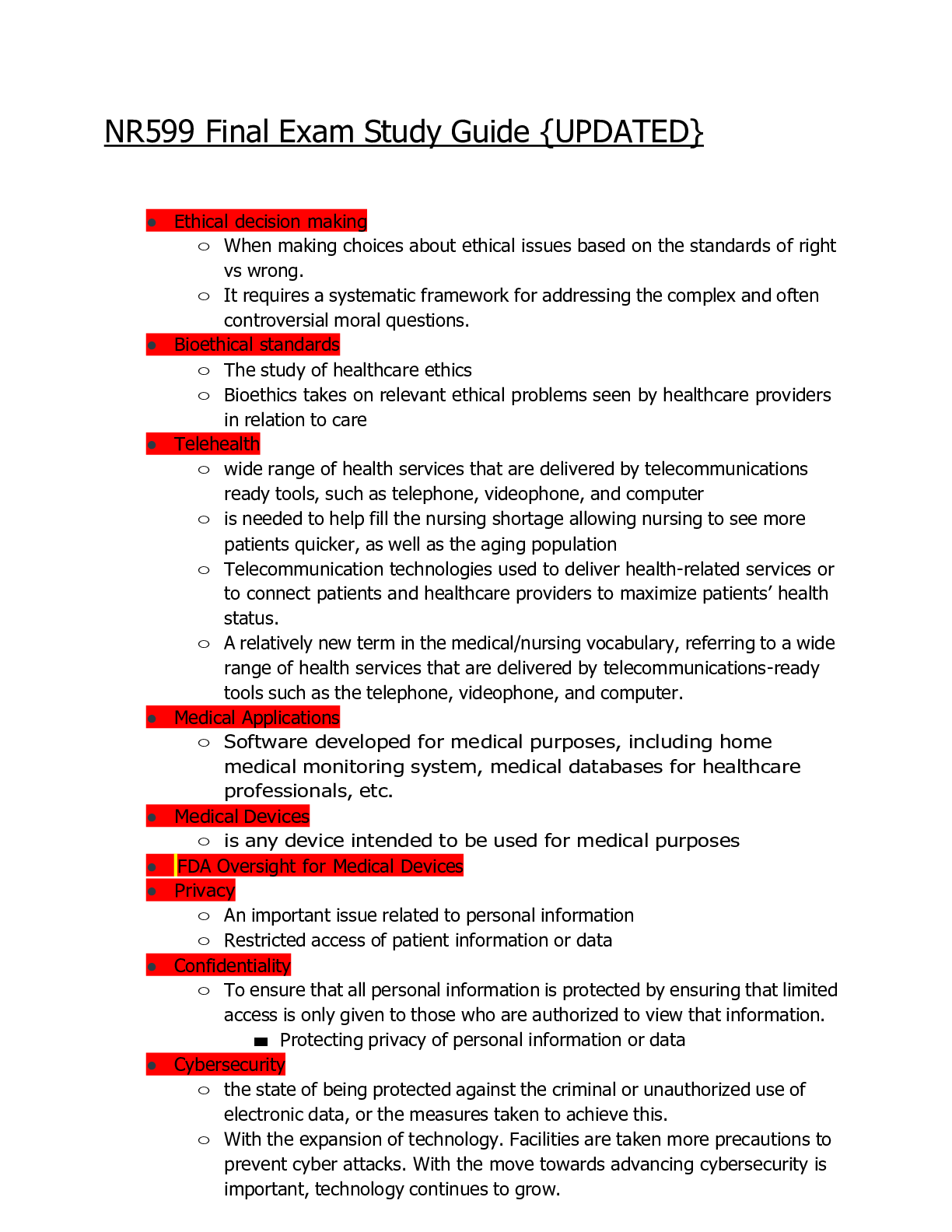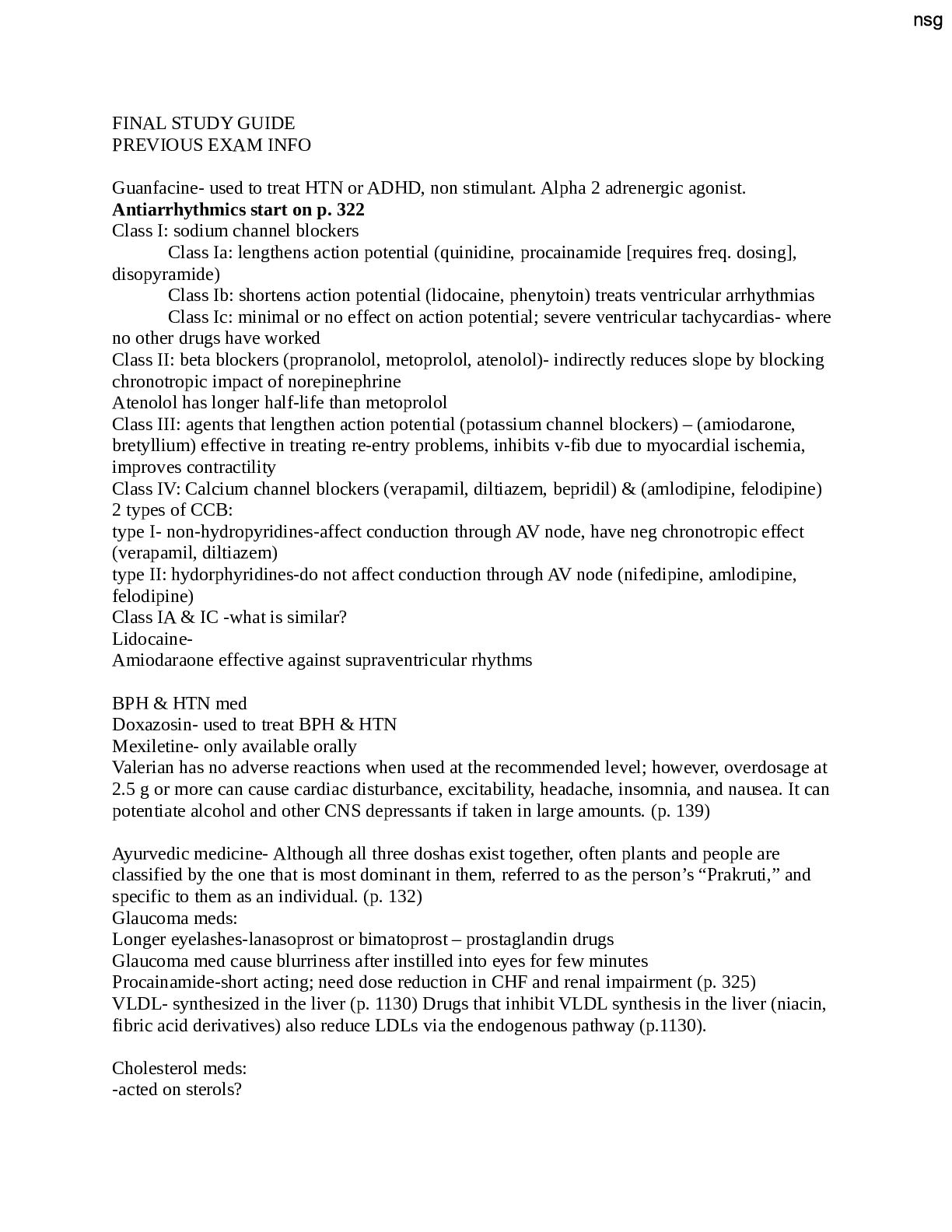*NURSING > STUDY GUIDE > Chamberlain College of Nursing NR601 FINAL STUDY GUIDE (All)
Chamberlain College of Nursing NR601 FINAL STUDY GUIDE
Document Content and Description Below
NR601 FINAL EXAM STUDY GUIDE Week 5: Glucose metabolism disorders Types of DM 1. Type 1- severe insulin deficiency resulting in reduction or absence of functioning beta cells in the pancreatic isl... ets of Langerhans. This leads to hyperglycemia due to altered metabolism of lipids, carbs, and proteins. Initial s/s of hyperglycemia. Subjective findings- polyuria, polydipsia, nocturnal enuresis and polyphagia with paradoxical weight loss, visual changes and fatigue. Objective-dehydration(poor skin turgor and dry mucous), wt loss despite normal/increase appetite, reduction in muscle mass. DKA-fatigue, cramping, abnormal breathing 2. Type 2- Type 2 DM is characterized by the abnormal secretion of insulin, resistance to the action of insulin in the target tissues, and/or an inadequate response at the level of the insulin receptor. A patient may, however, present with pruritus, fatigue, neuropathic complaints such as numbness and tingling, or blurred vision. 3. Prediabetic- fasting glucose consistently elevated above the normal range but less than 100-125. Impaired glucose tolerance (IGT) state of hyperglycemia where 2 hr post glucose load glycemic level is 140-199 Diagnostic criteria- there are 4 lab-based criteria to confirm DM: A1C, random plasma glucose, fasting plasma glucose, and 2-hr post load plasma glucose AIC of 6.5 or higher=diabetes Random plasma glucose level of 200 WITH classic symptoms of hyperglycemia or a hyperglycemic crisis Fasting plasma glucose level of 126 or higher on TWO occasions(fasting is defined as no caloric intake for at least 8 hrs 2-hour post load plasma glucose level of 200 or higher during an OGTT, following consumption of a glucose load containing the equivalent of 75g of anhydrous glucose dissolved in water (OGTT is also used to screen for diabetes during pregnancy) *** In the absence of unequivocal hyperglycemia results should be confirmed by repeat testing on a new blood sample without delay, preferably using the same type of test.*** *All above-but confirmation of type 2 diabetes mellitus requires: two fasting blood glucoses ≥126 mg/dL or two random blood glucoses ≥200 mg/dL. You do not screen for type 1 diabetes but you do screen for type 2 if an individual is overweight or obese, regardless of age, and for all adults aged 45 years and older. Tests should be repeated at a minimum of 3 year intervals Initial TreatmentType 1- FIRST LINE: INSULIN. The initial goal of treatment for type 1 DM is to normalize the elevated blood glucose level. This is best accomplished by intensive insulin regimens to achieve the following goals: plasma glucose levels of 80 to 130 mg/dL before meals, peak postprandial 1(1–2 hours after the beginning of a meal) glucose levels of less than 180 mg/dL, and an A1C below 7% for adults with type 1 DM. A comprehensive treatment plan requires exogenous insulin, frequent self-monitoring of blood glucose (SMBG), medical nutrition therapy, regular exercise, continuing education in prevention and treatment of diabetic complications, and the periodic reassessment of treatment goals. (Type 1A: insulin dependent, Type 1B: variably insulin dependent). The ADA Standards of medical care in diabetes states that the majority of patients with type 1 DM, should be treated with multiple daily injections of prandial insulin and daily basal insulin or with a continuous subcutaneous insulin infusion pump. INITIATION OF INSULIN THERAPY IN NEWLY DIAGNOSED TYPE 1 DM, SHOULD BE MANAGED BY OR IN CLOSE COLLABORATION WITH AN ENDOCRINOLOGIST. Type 2-FIRST LINE: LIFESTYLE MANAGEMENT. Interventions should include treatments directed at both risk reduction and glycemic control. Lifestyle management is an important part of treatment and comprises nutrition therapy, activity prescriptions for exercise, decreased prolonged sitting, and in older adults, training in balance and flexibility. Lifestyle management should focus on mental health, sleep, and smoking cessation. Obesity management has become a high-level target in the treatment of pts with type 2 DM. ADA states that every patient should receive diabetes self-management education and diabetes self-management support at the time of diagnosis. Pharmacological therapy for type 2 DM is required when lifestyle management does not result in adequate blood glucose control. Drug therapy should always be considered an adjunctive therapy to lifestyle management, as the latter is typically initiated first. The ADA and AACE recommend metformin if there are no contraindications, such as renal disease or abnormal creatinine clearance, acute myocardial infarction, or septicemia. The AACE recommends adding a second agent to lifestyle treatment and metformin if the A1C is more than 7.5% at the time of diagnosis or after 3 months of monotherapy without achievement of the patient’s blood glucose goals. Metformin can be used as a monotherapy unless the patient has contraindications or intolerance. Although metformin is the first-line medication recommended by the ADA and the AACE for DM type 2, it should be used only in patients with adequate renal function and should not be used in patients with an eGFR below 45 mL/min/1.73 m2. [Show More]
Last updated: 1 year ago
Preview 1 out of 30 pages
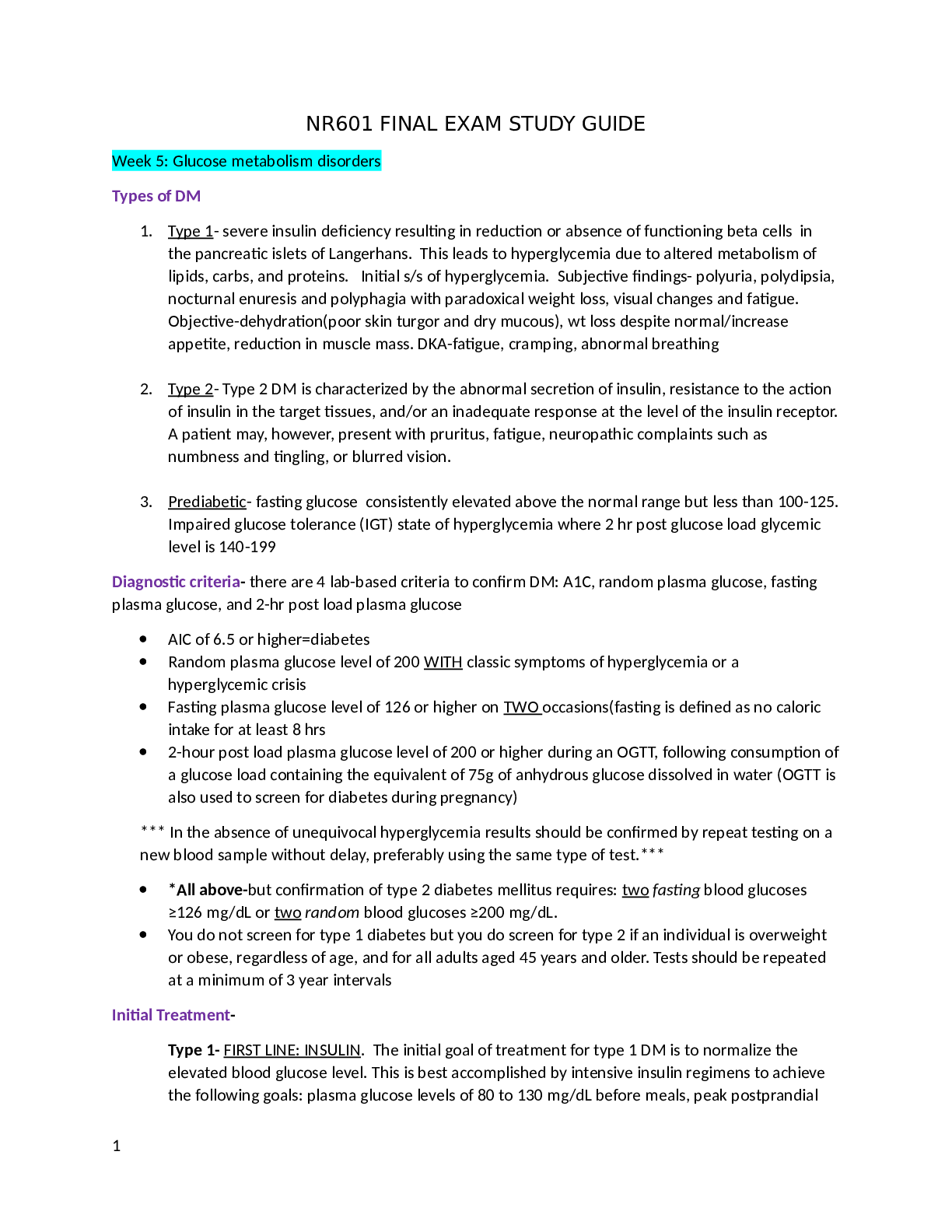
Reviews( 0 )
Document information
Connected school, study & course
About the document
Uploaded On
Aug 30, 2021
Number of pages
30
Written in
Additional information
This document has been written for:
Uploaded
Aug 30, 2021
Downloads
0
Views
48

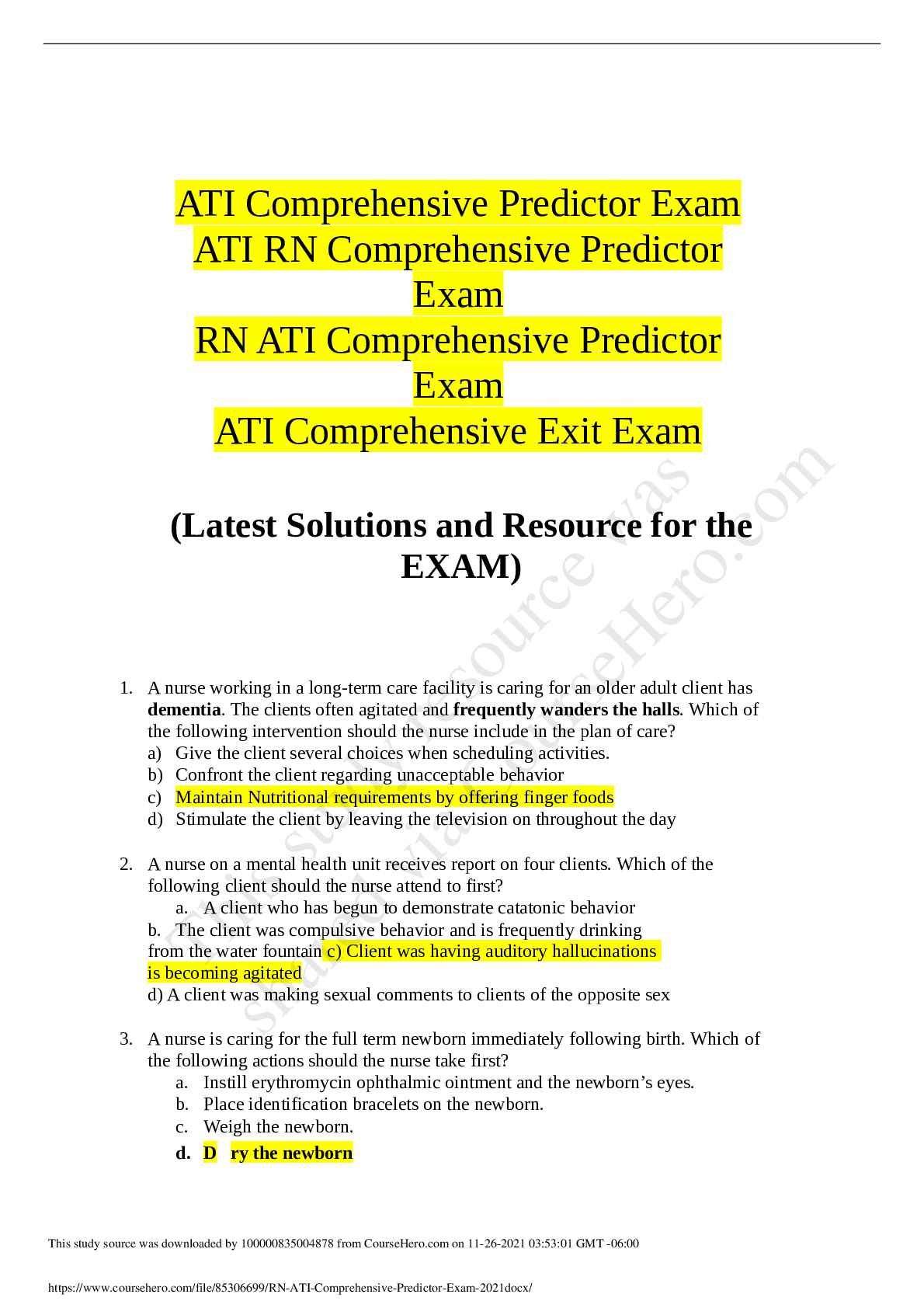
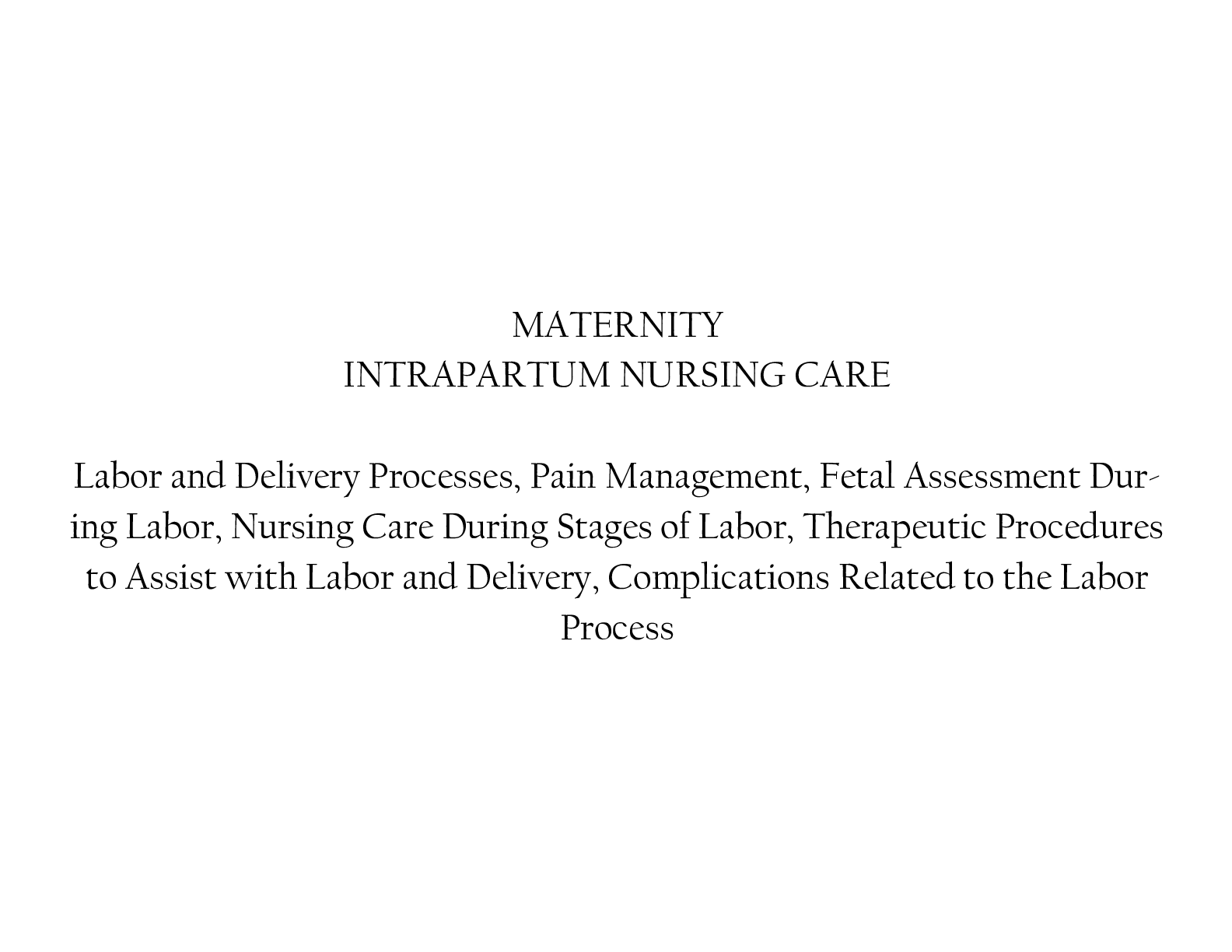
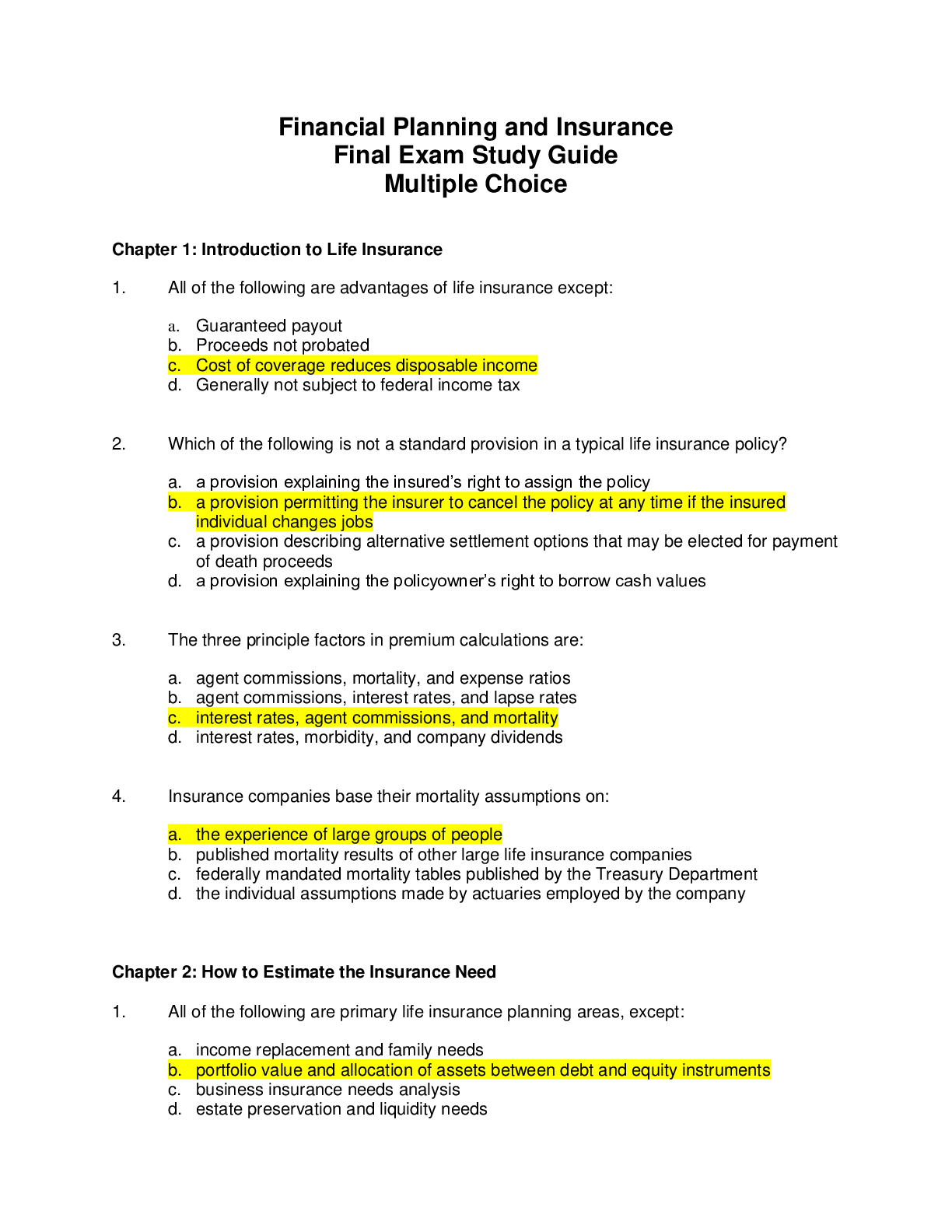
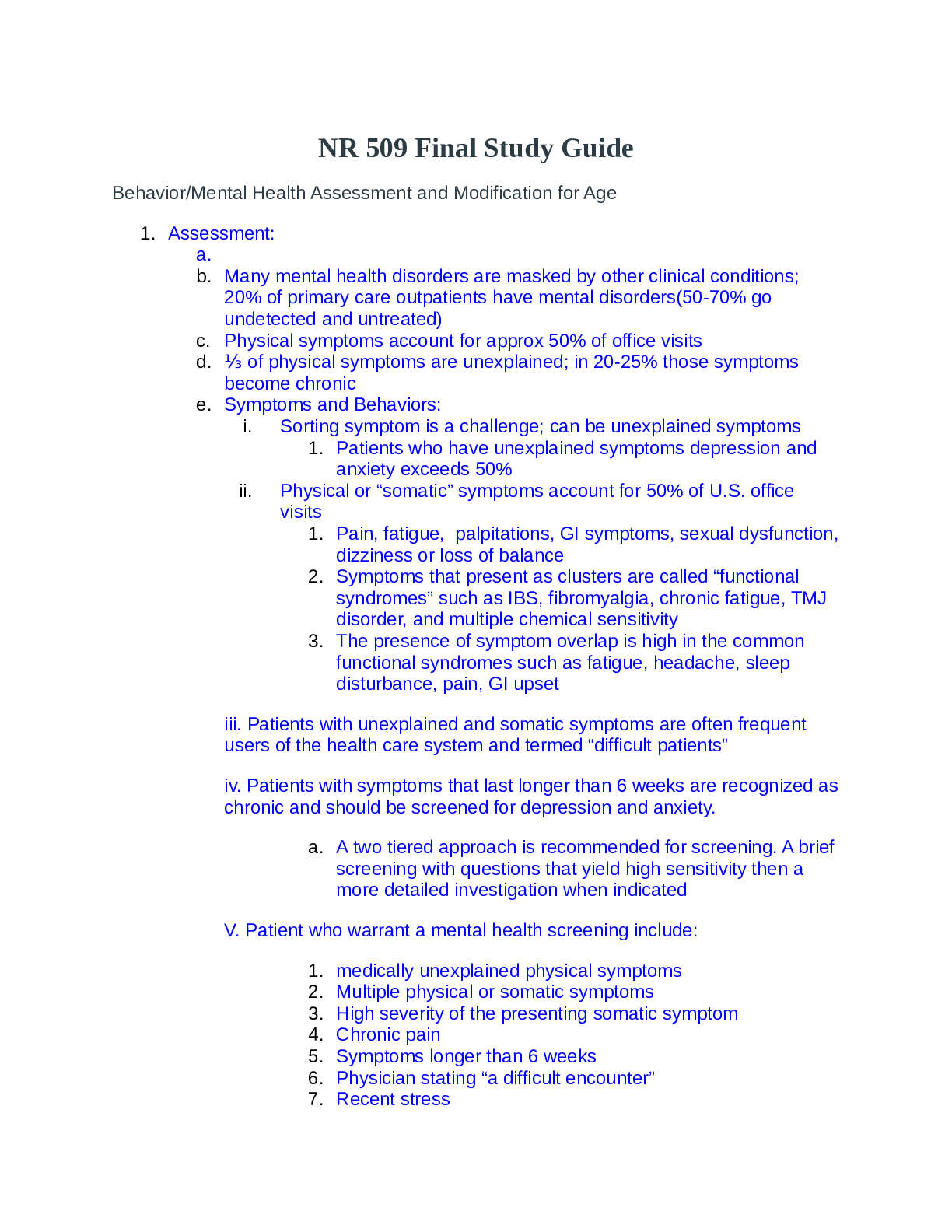
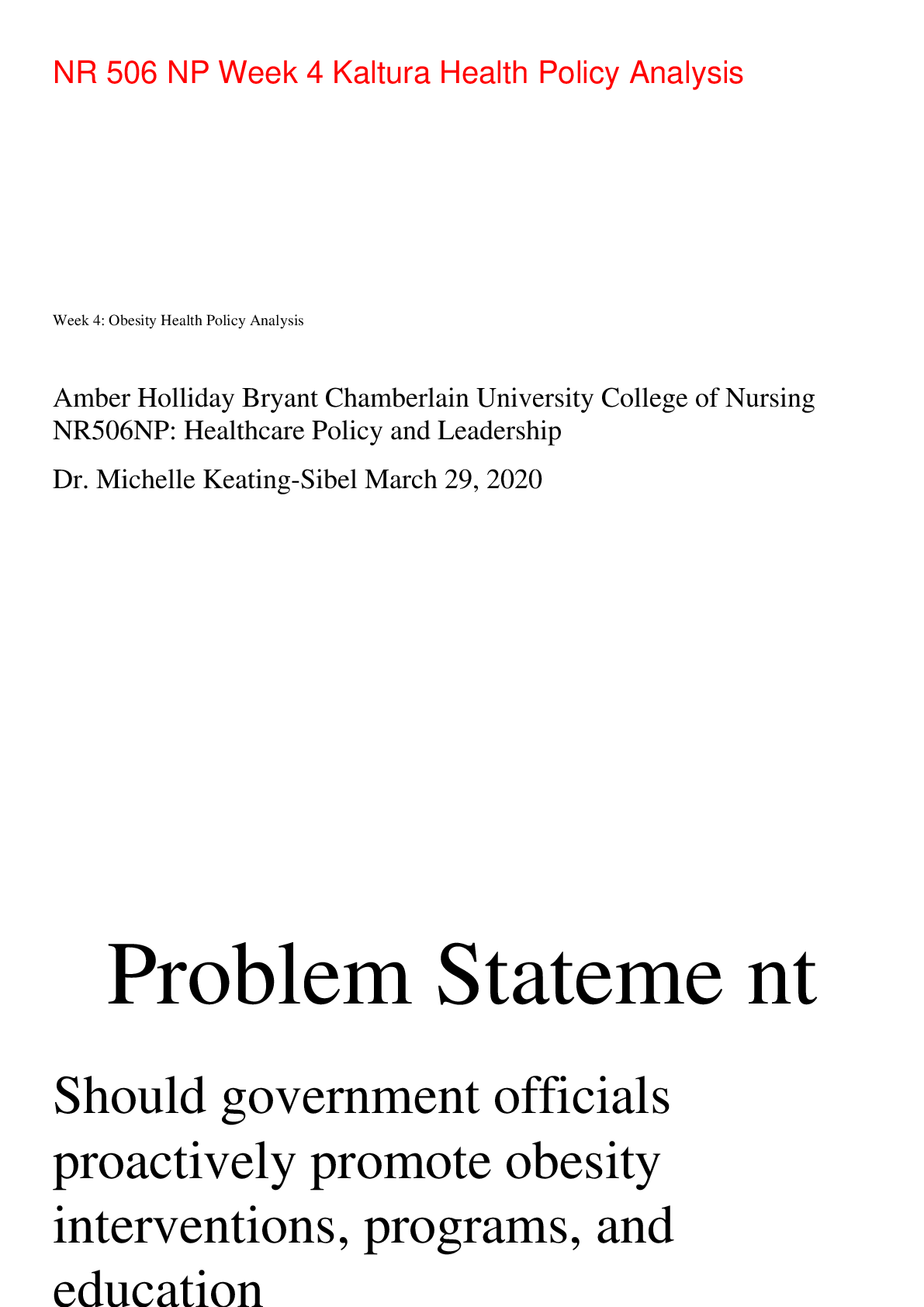
.png)
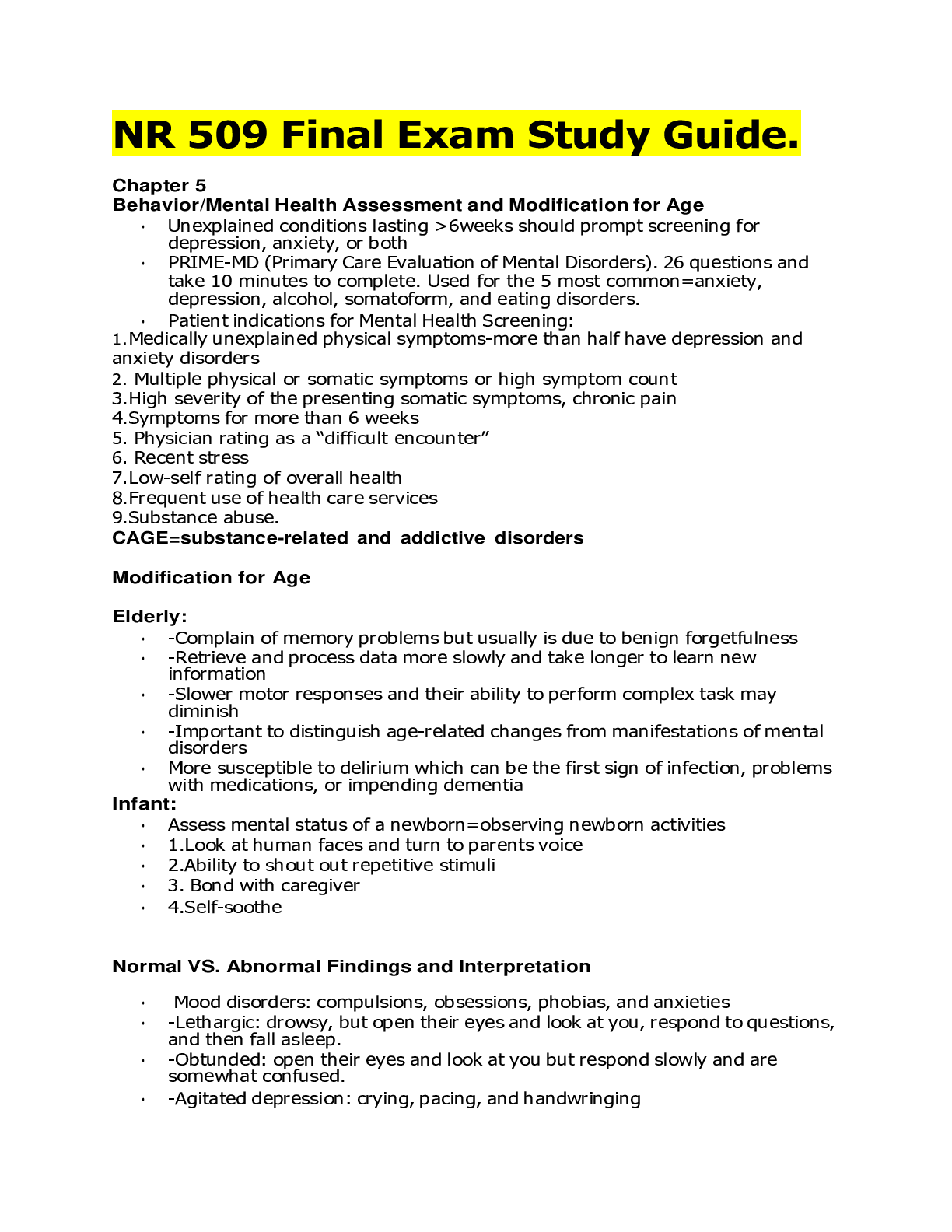
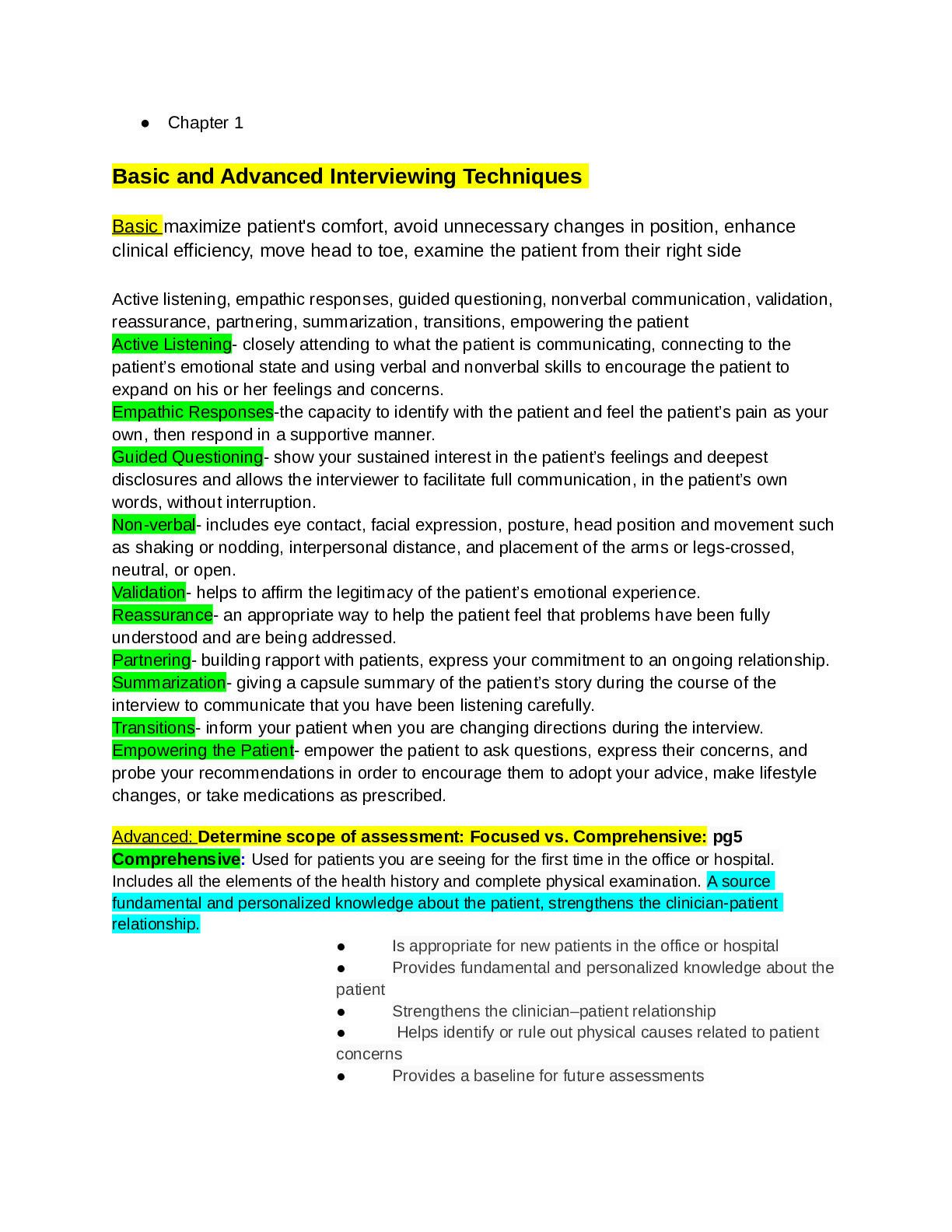
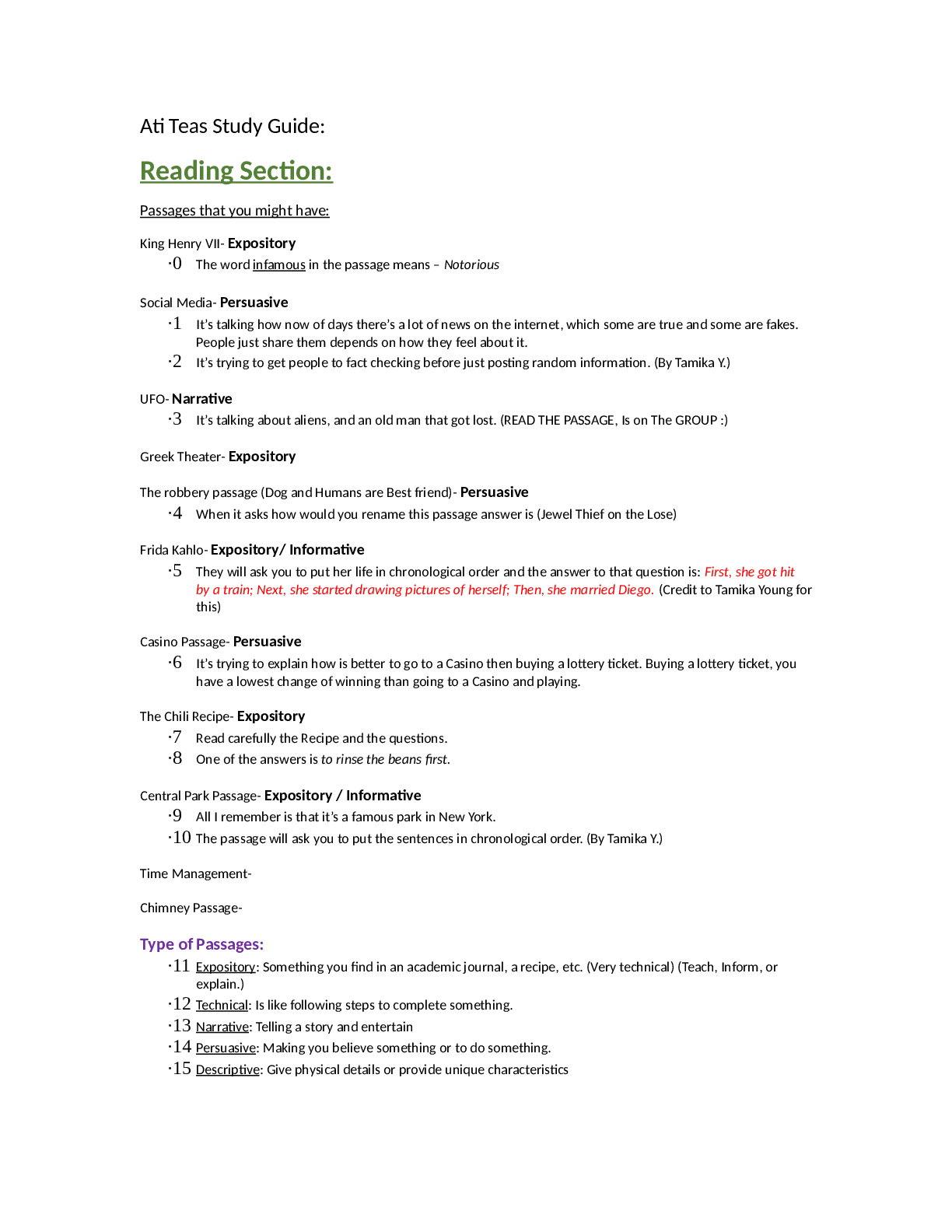


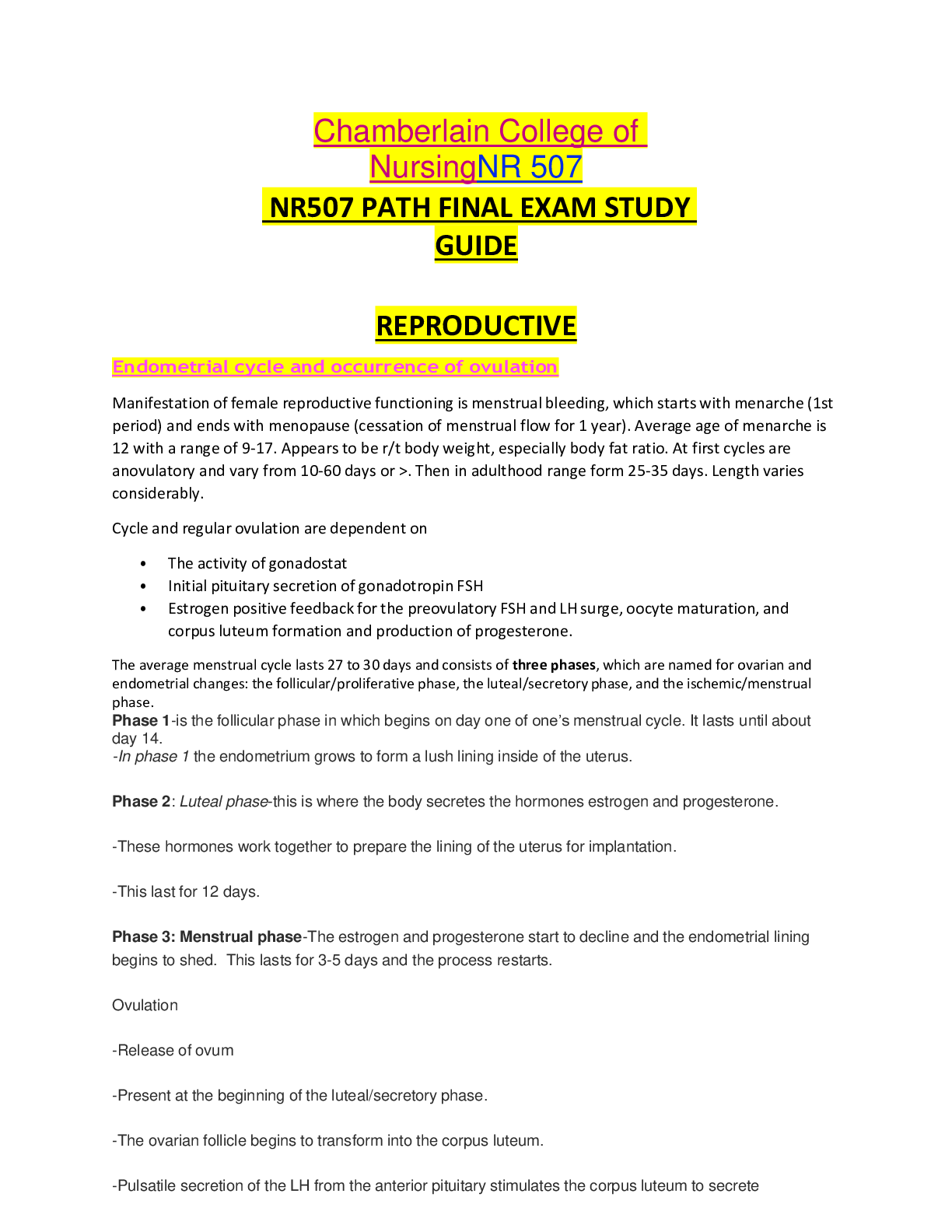
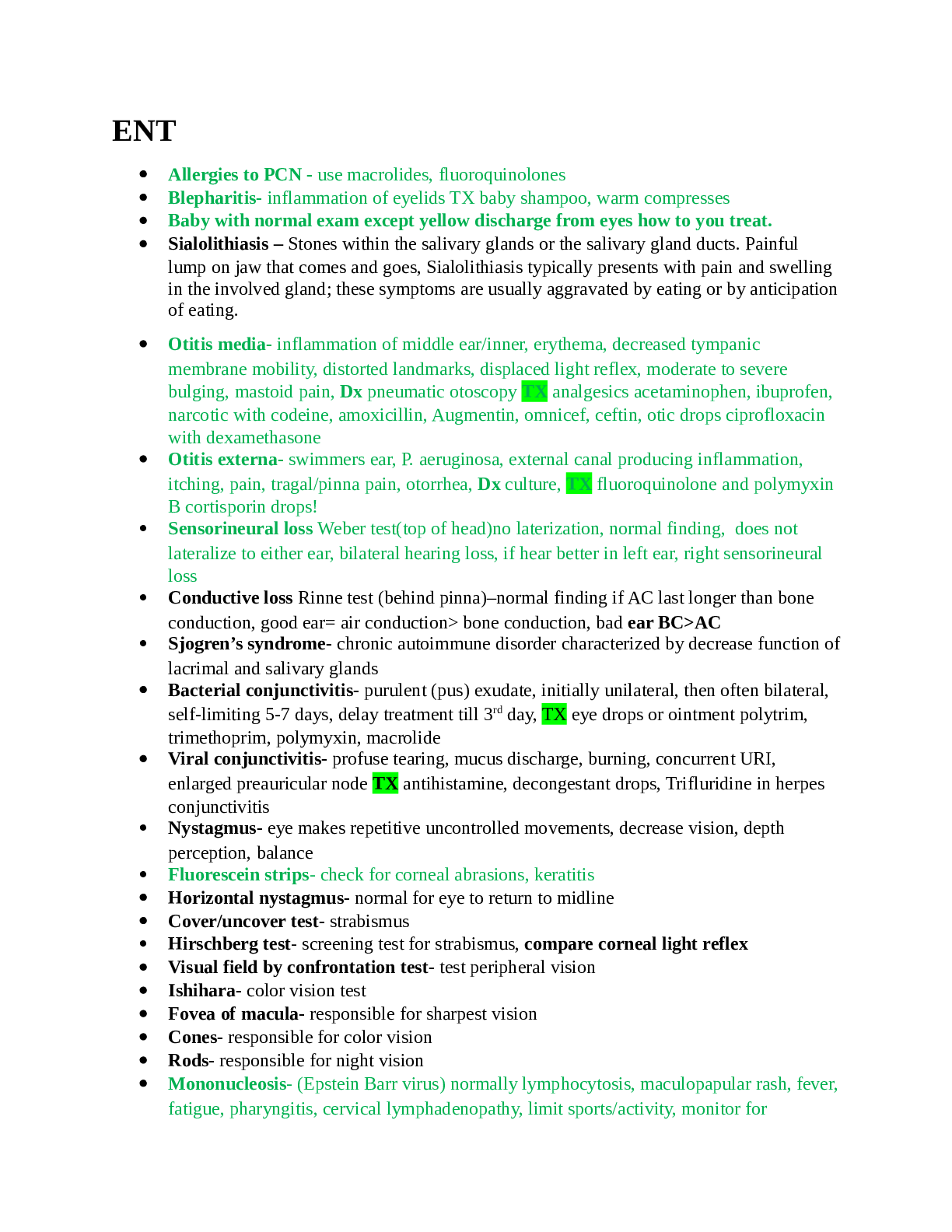
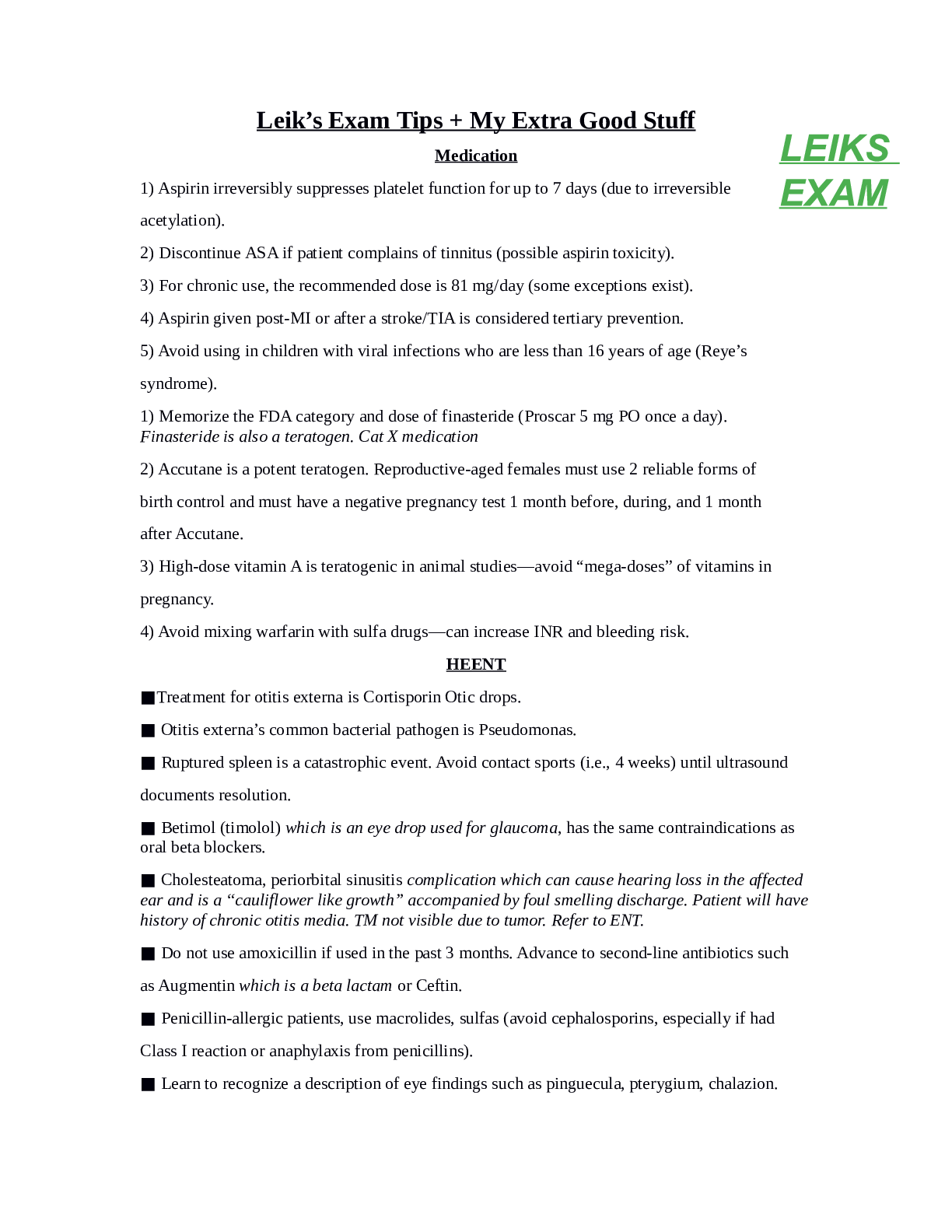
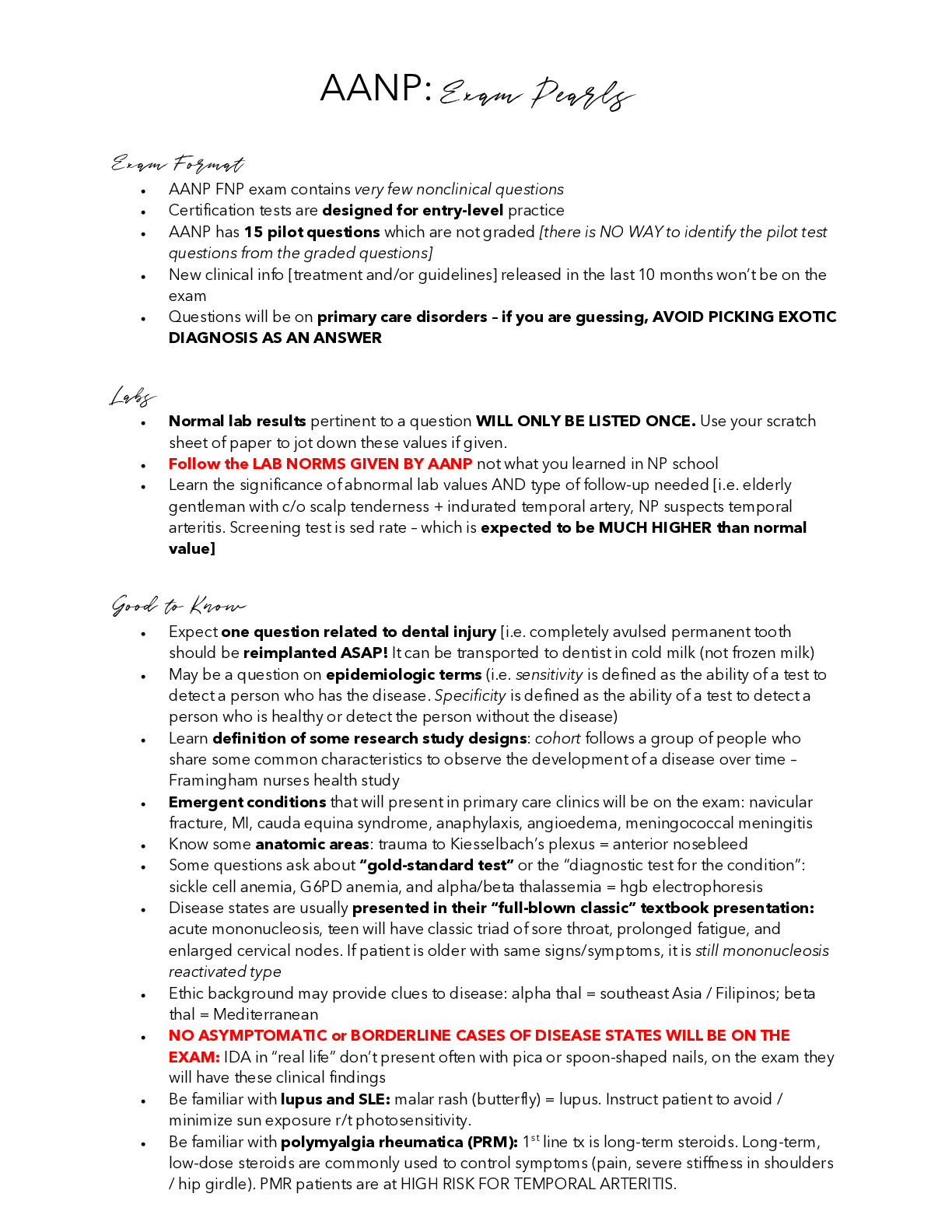
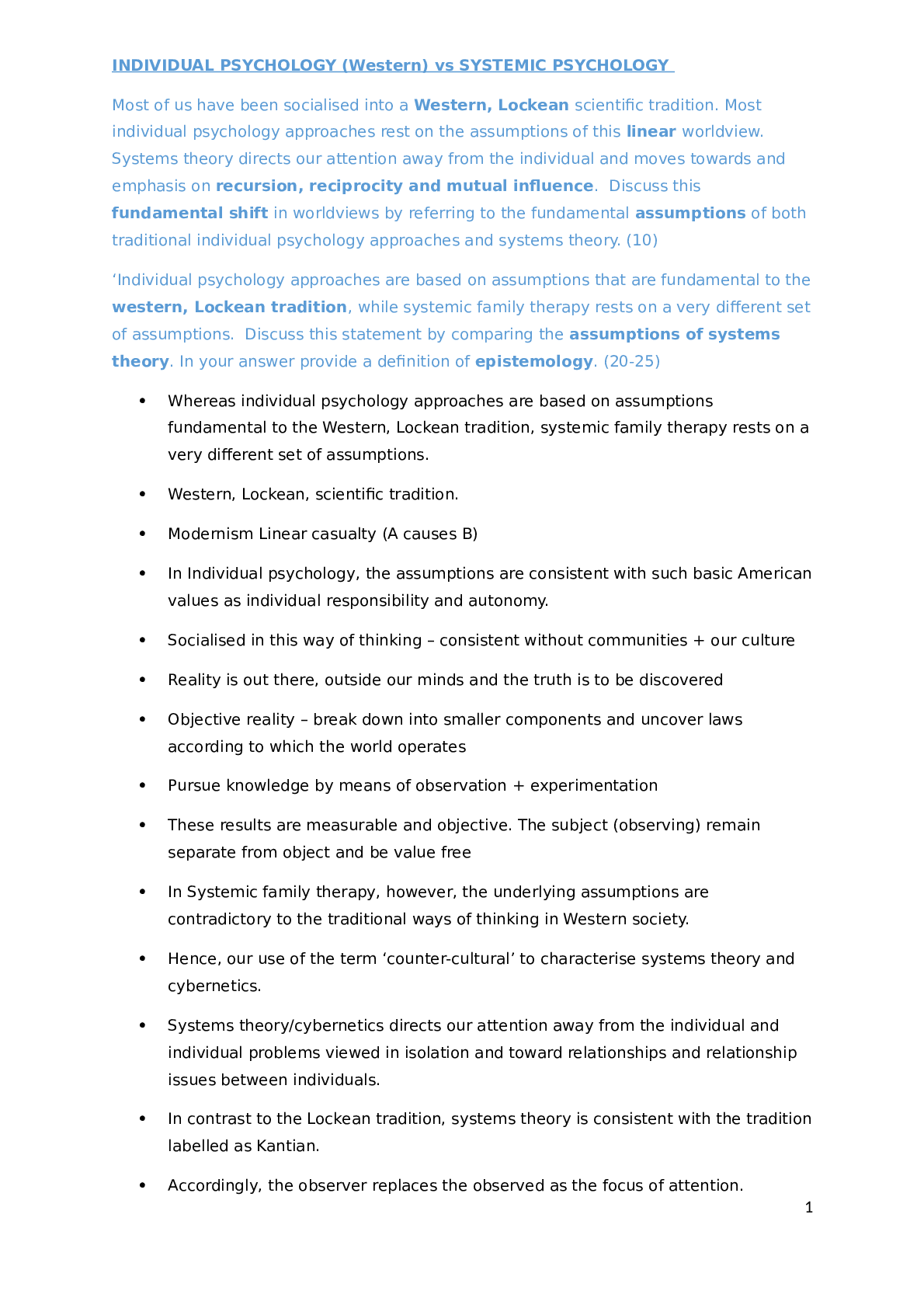
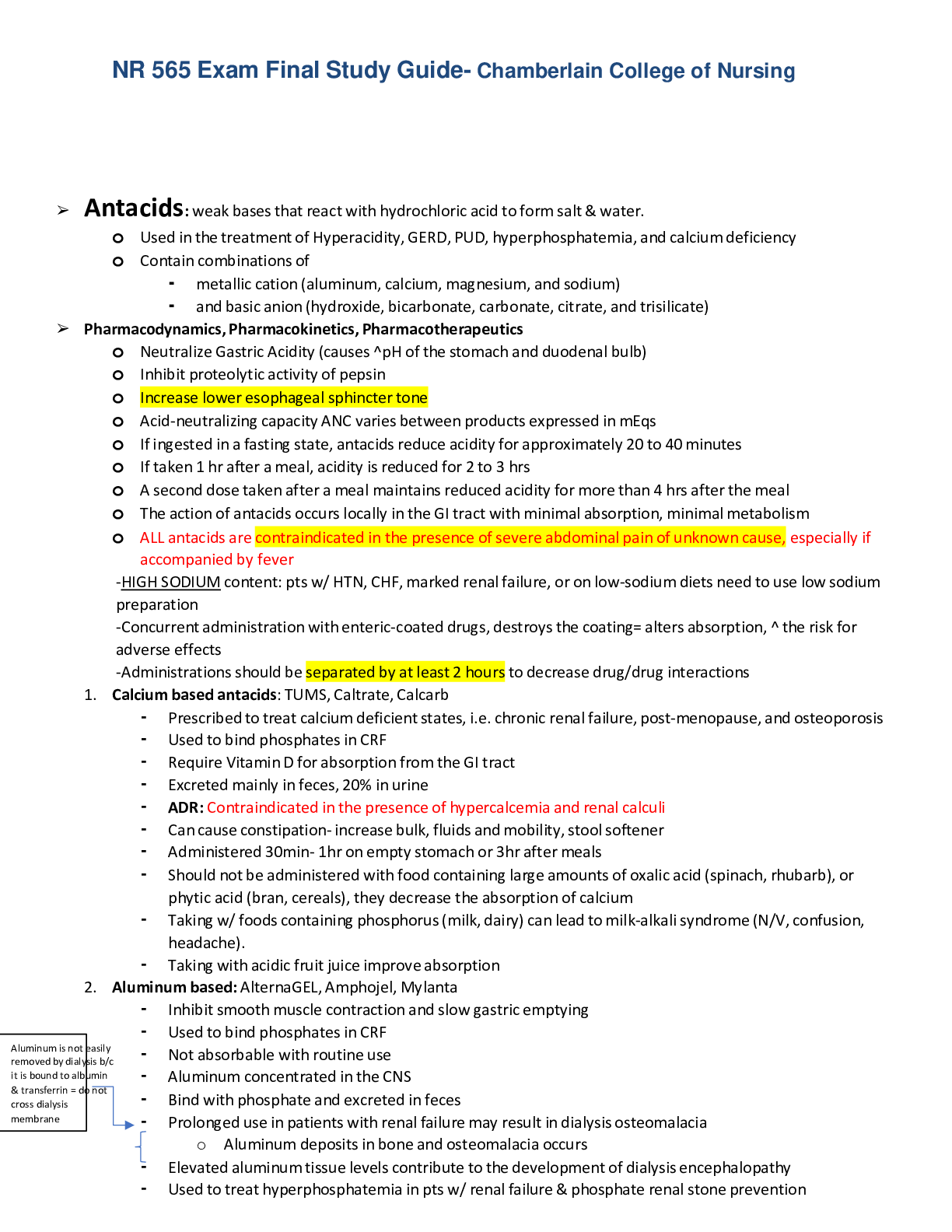
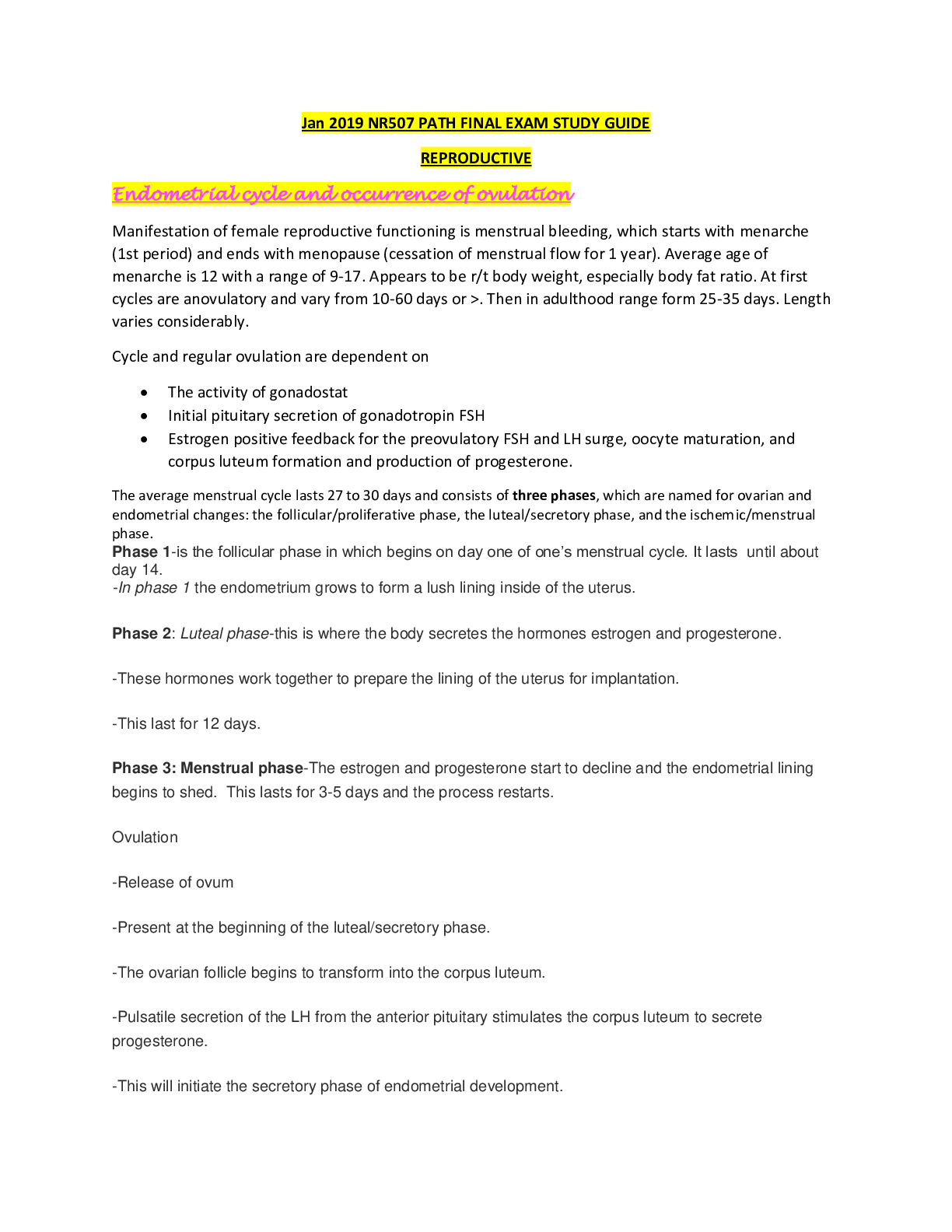
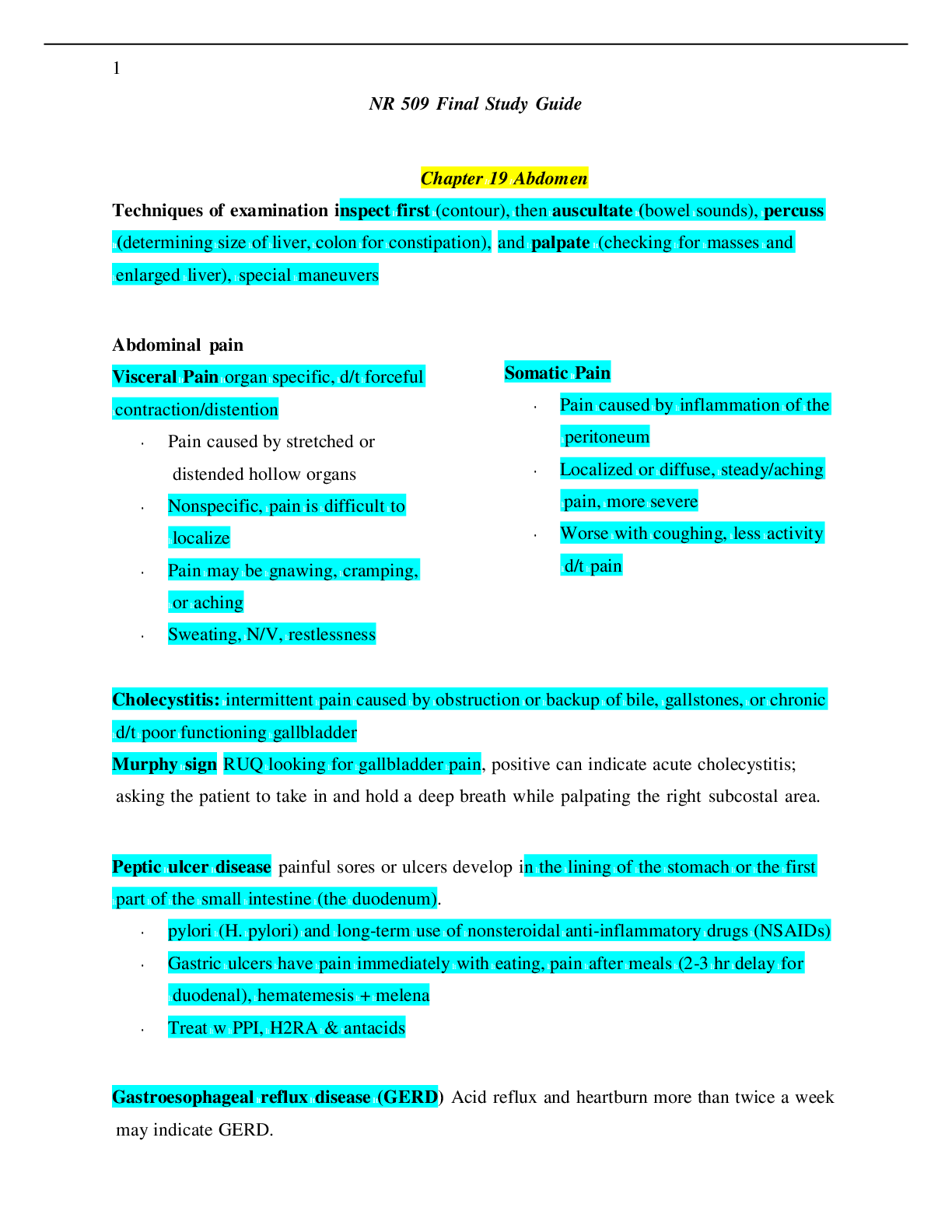
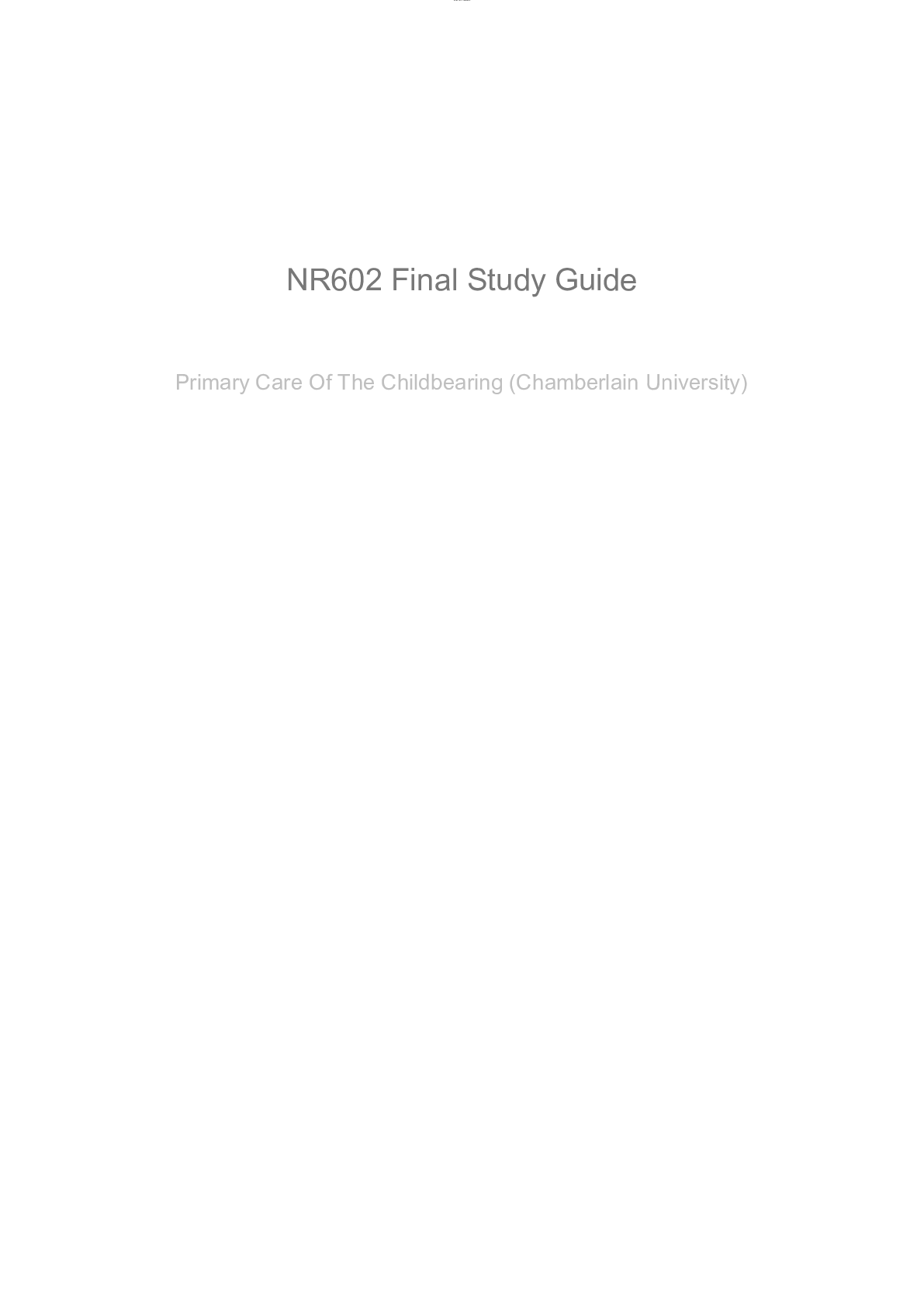
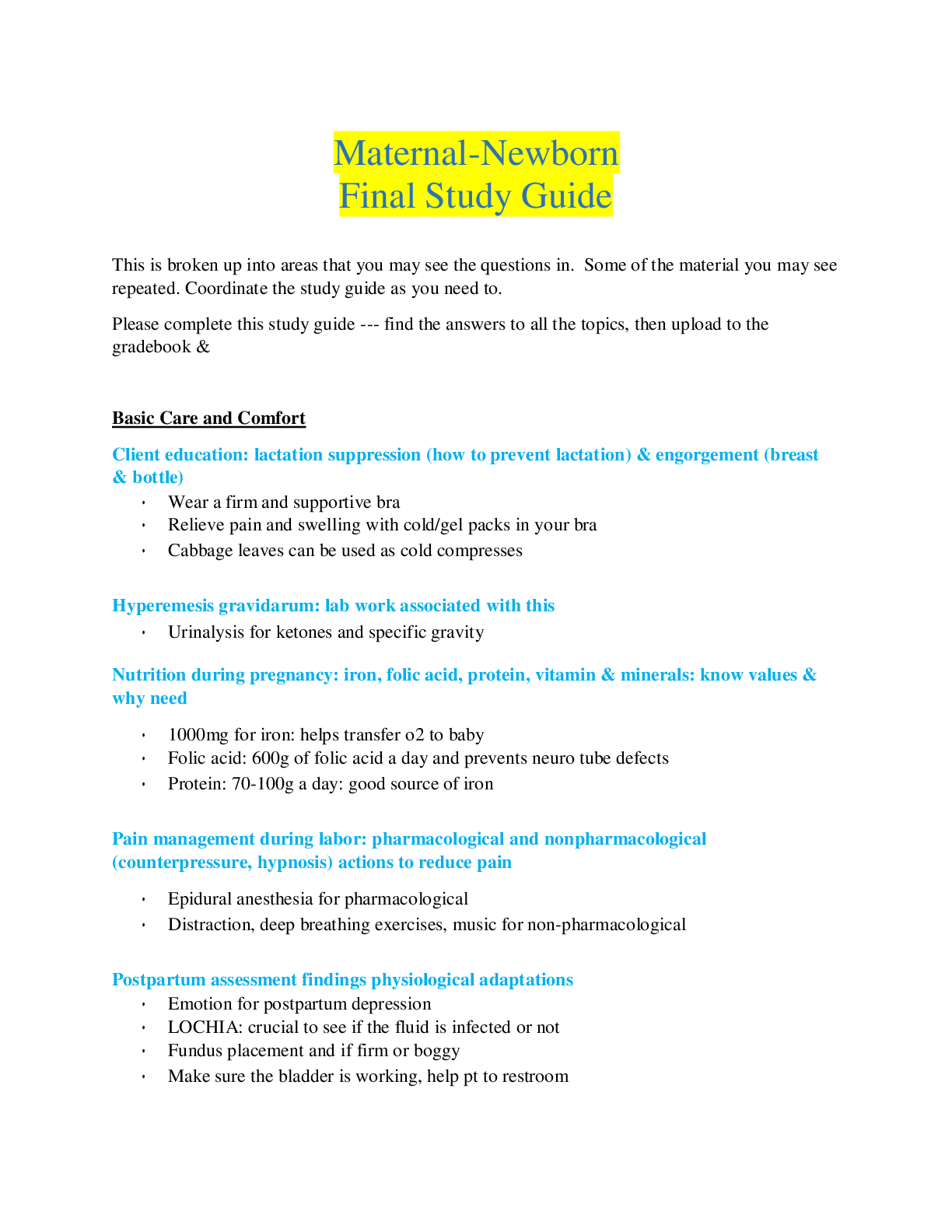
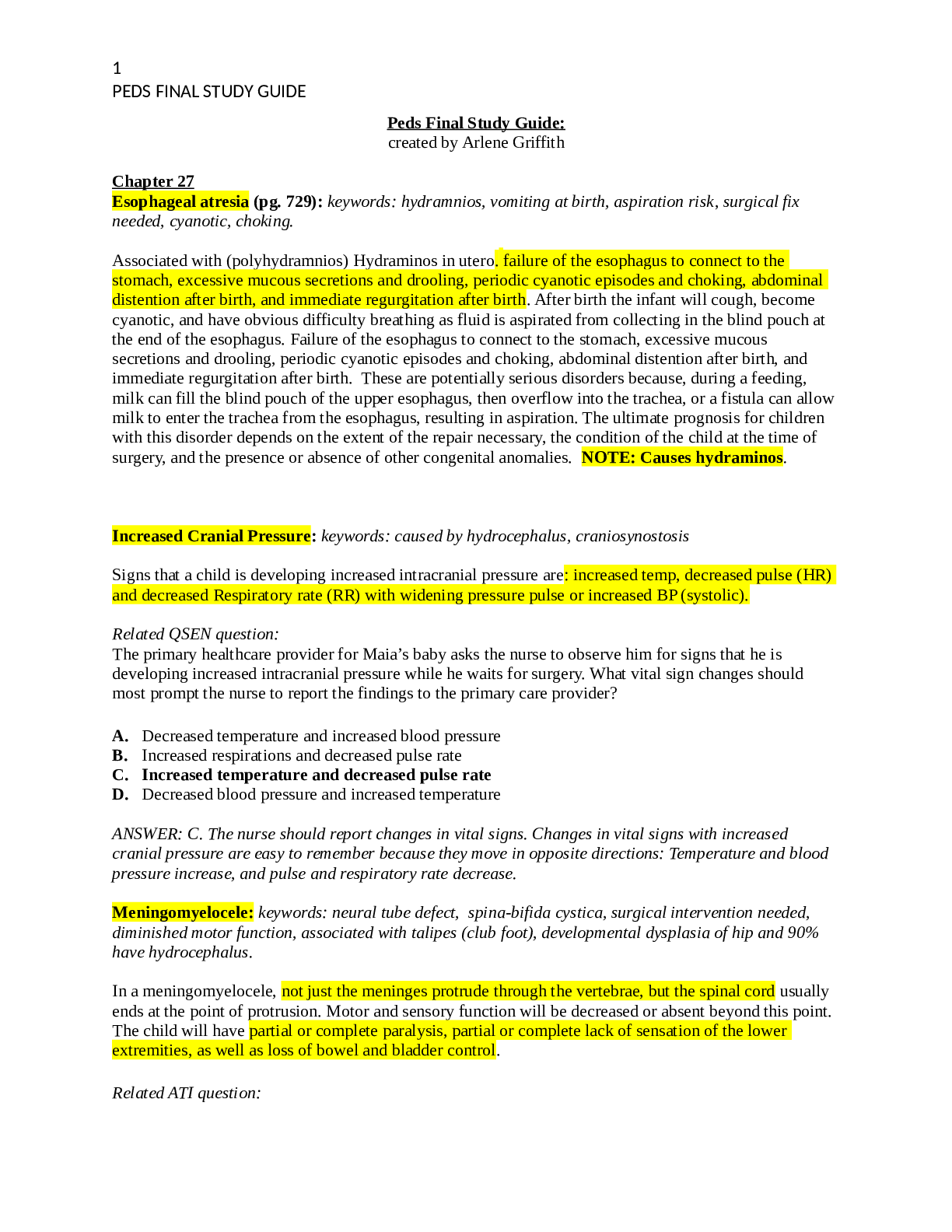
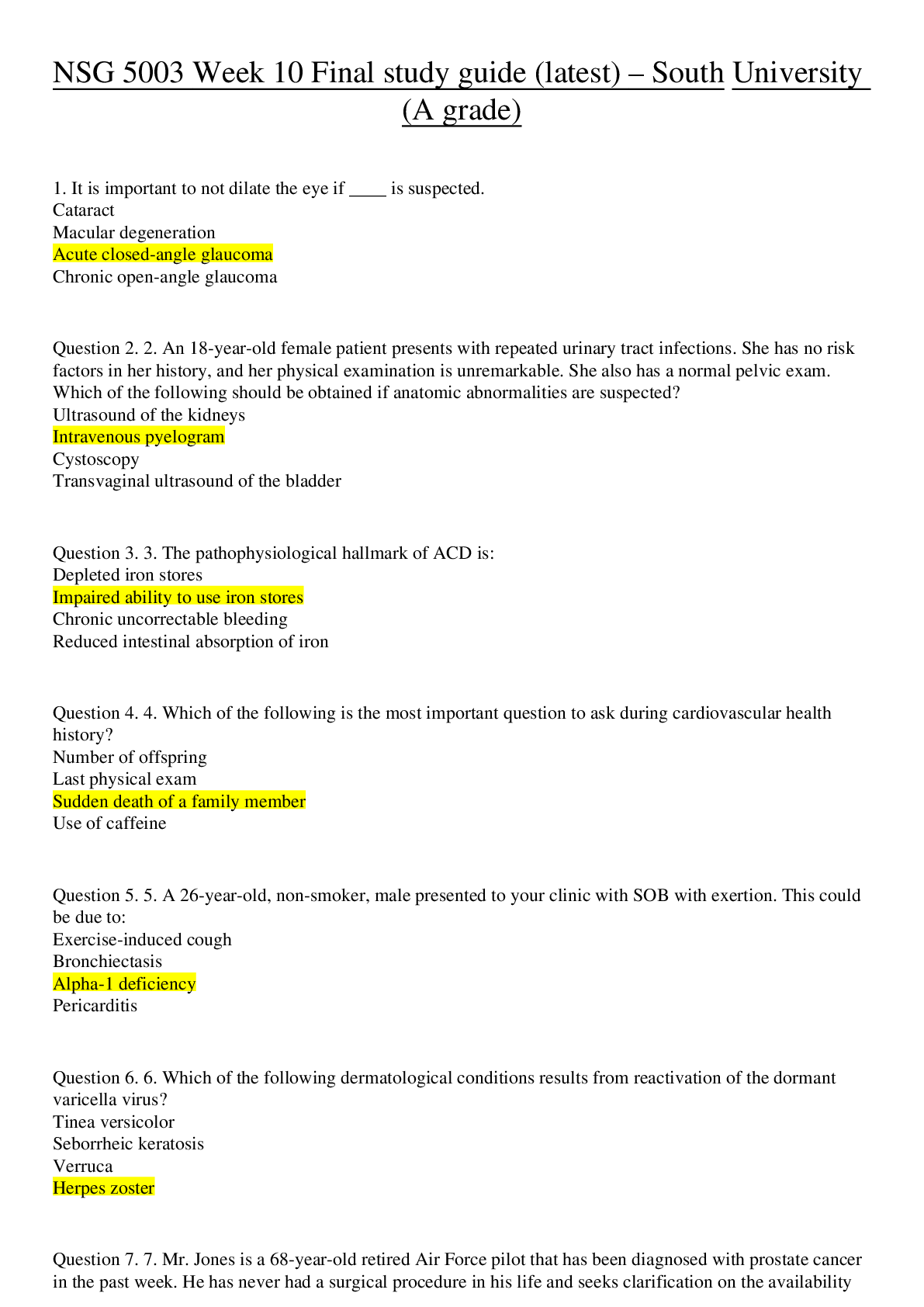
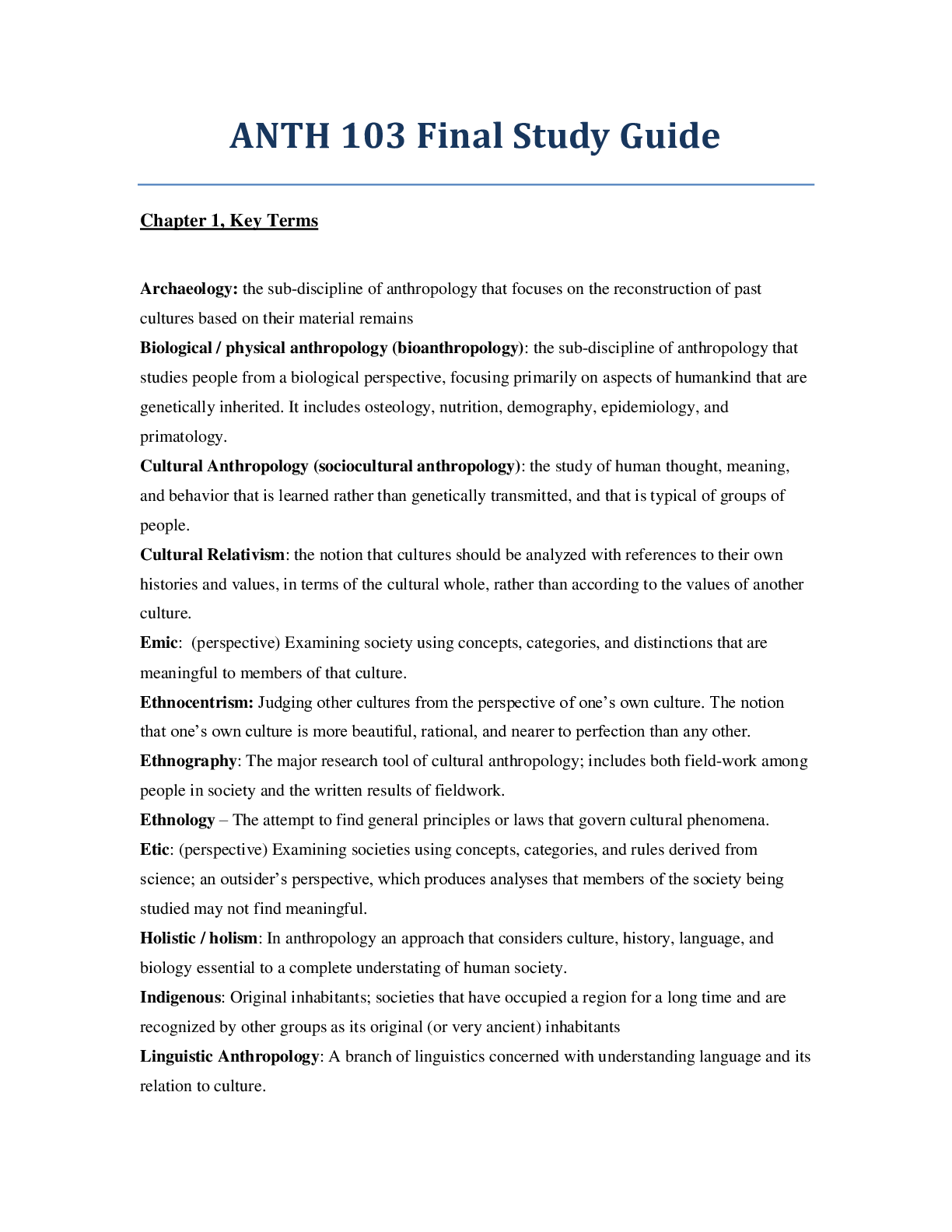
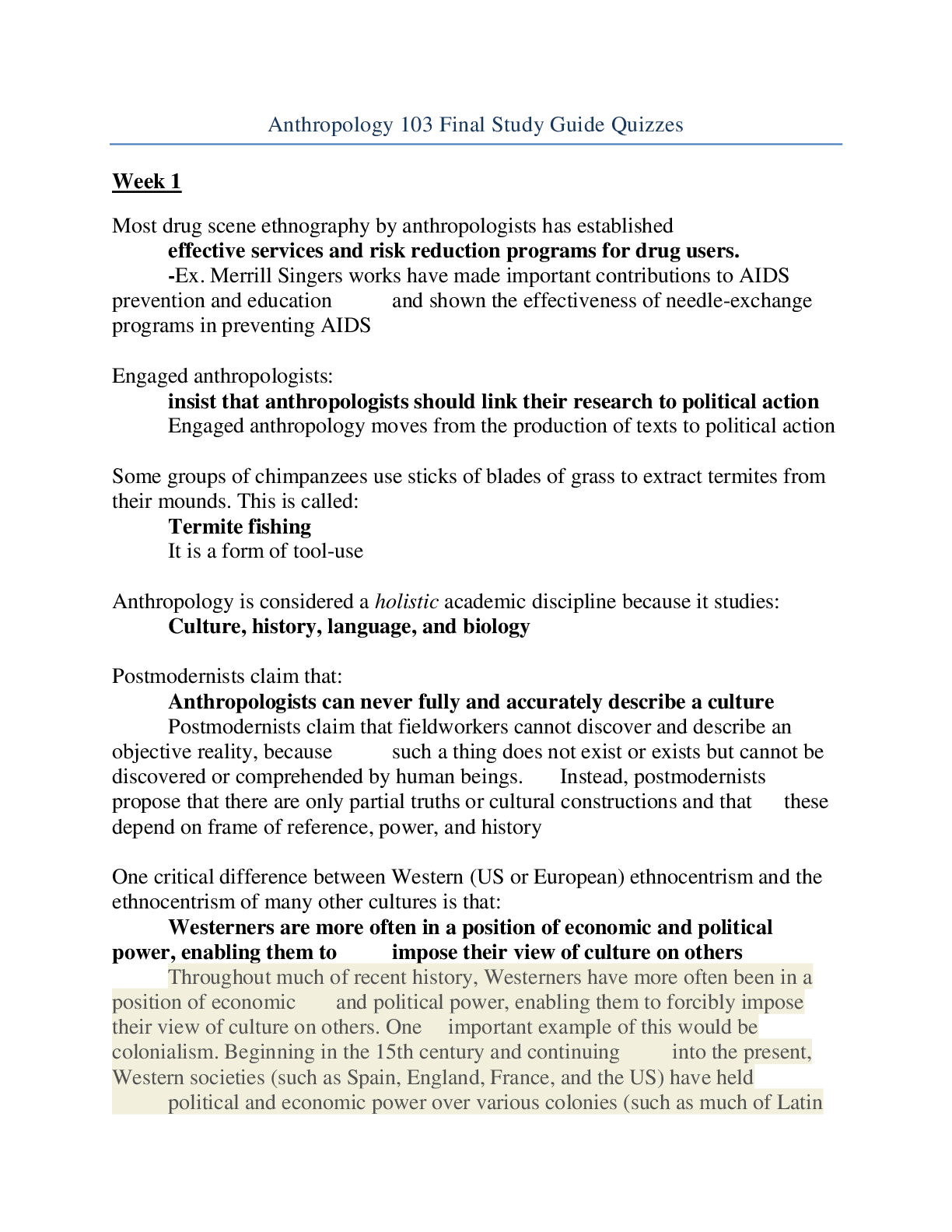
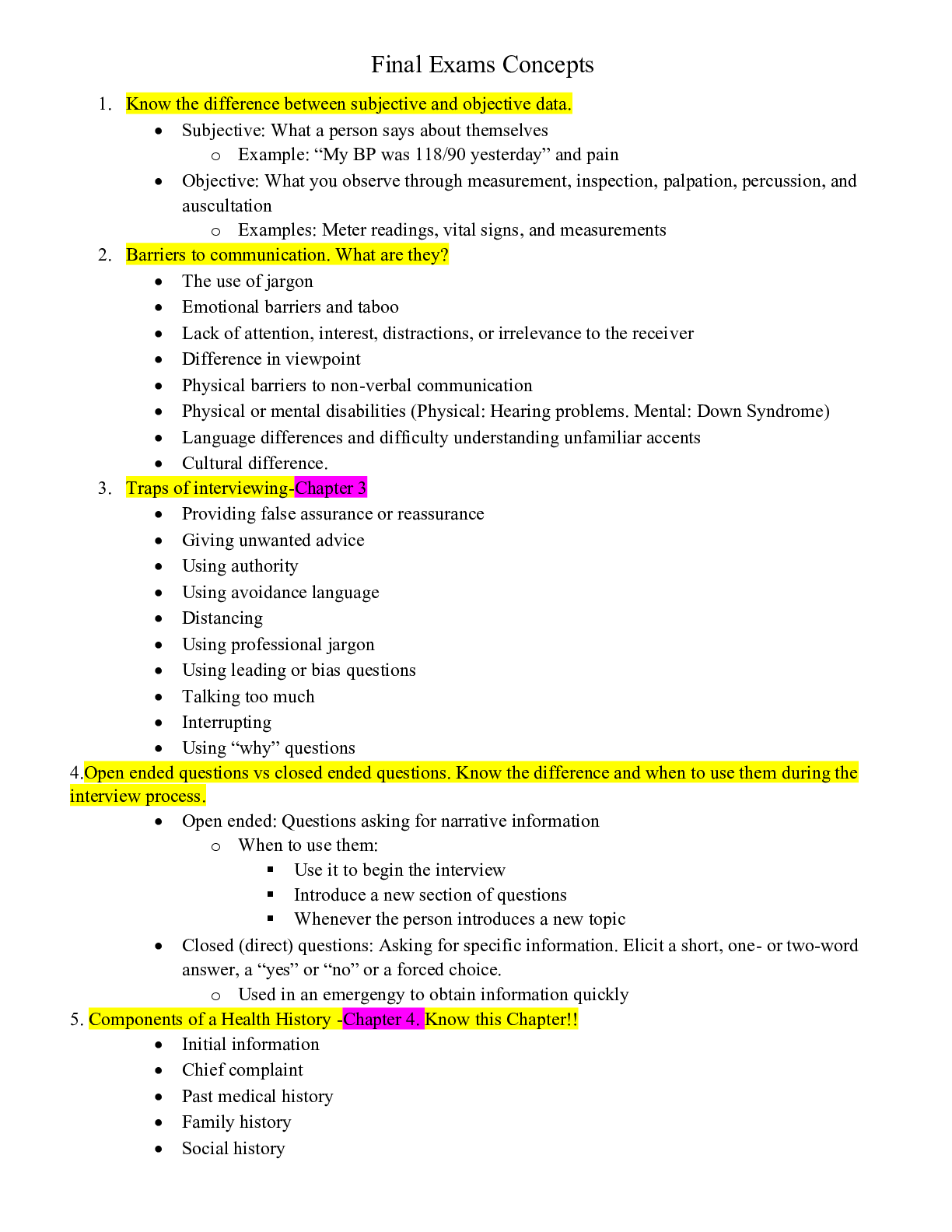
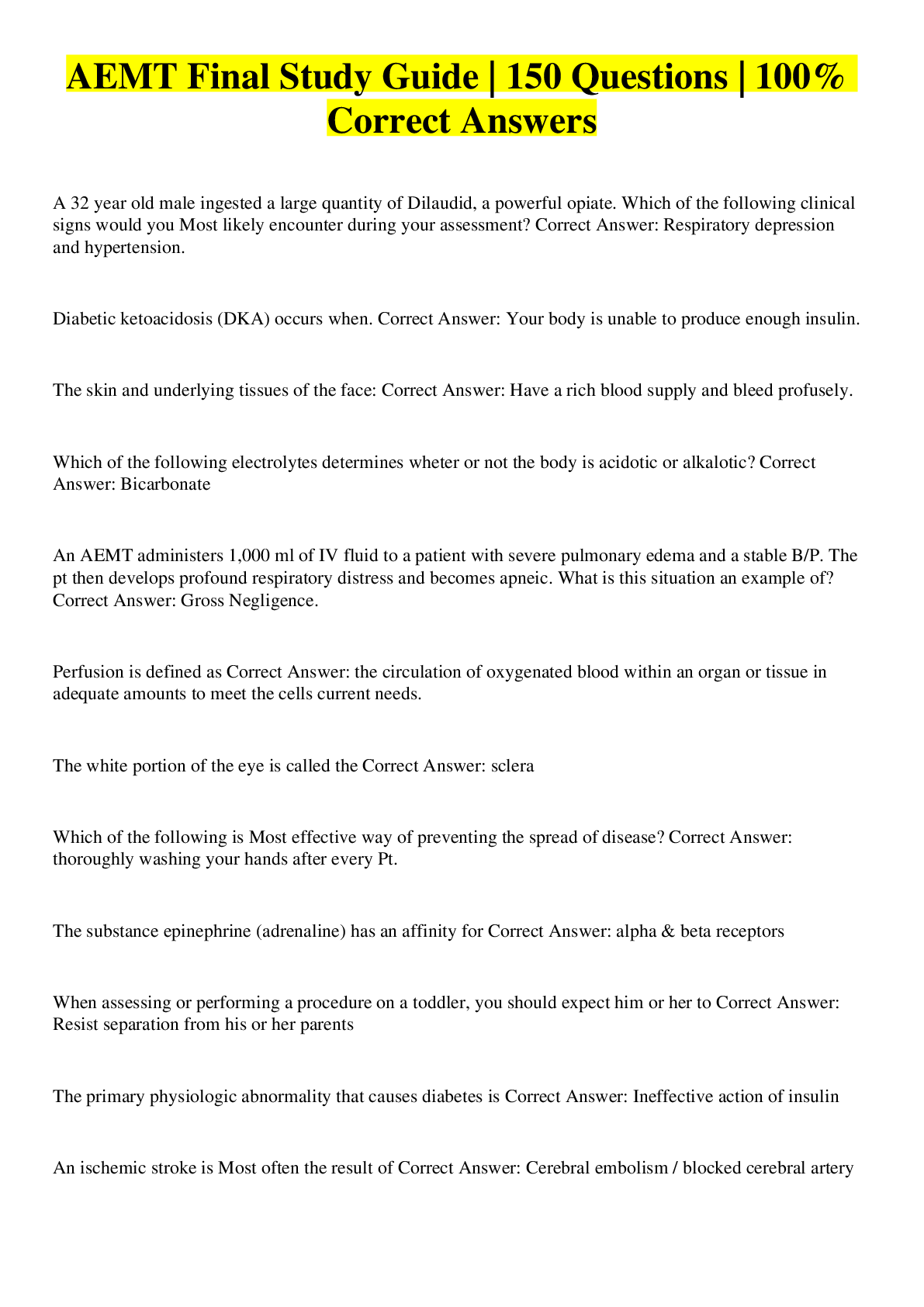

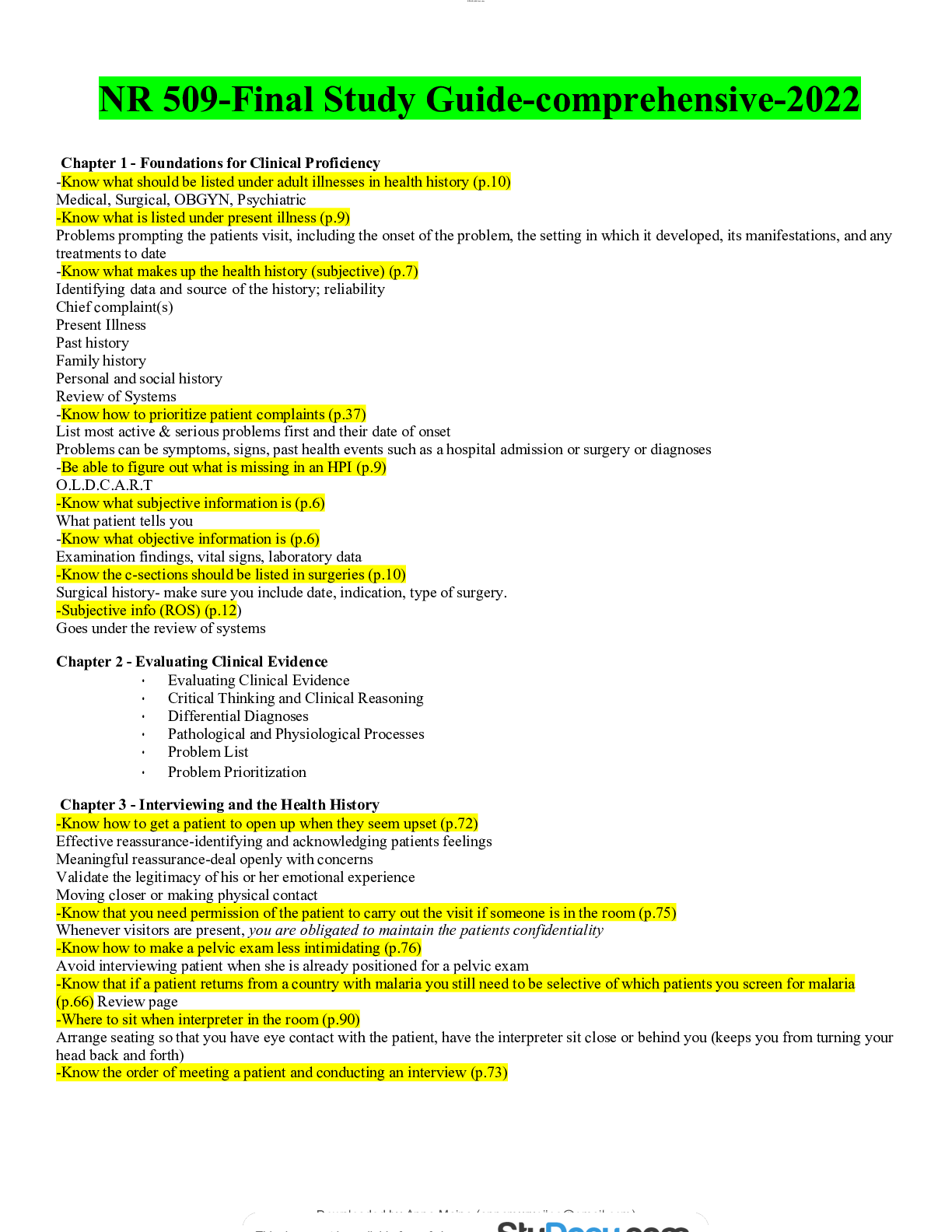
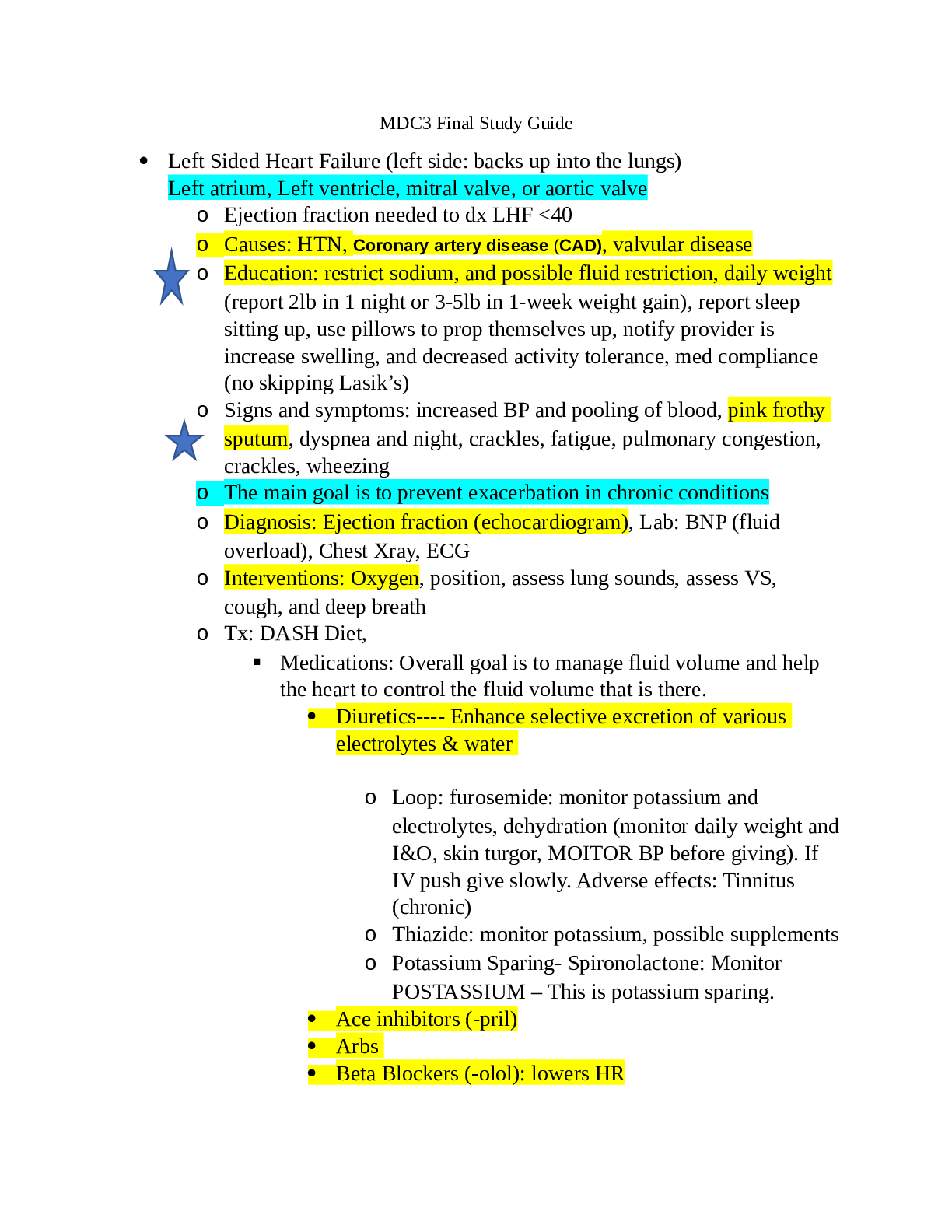
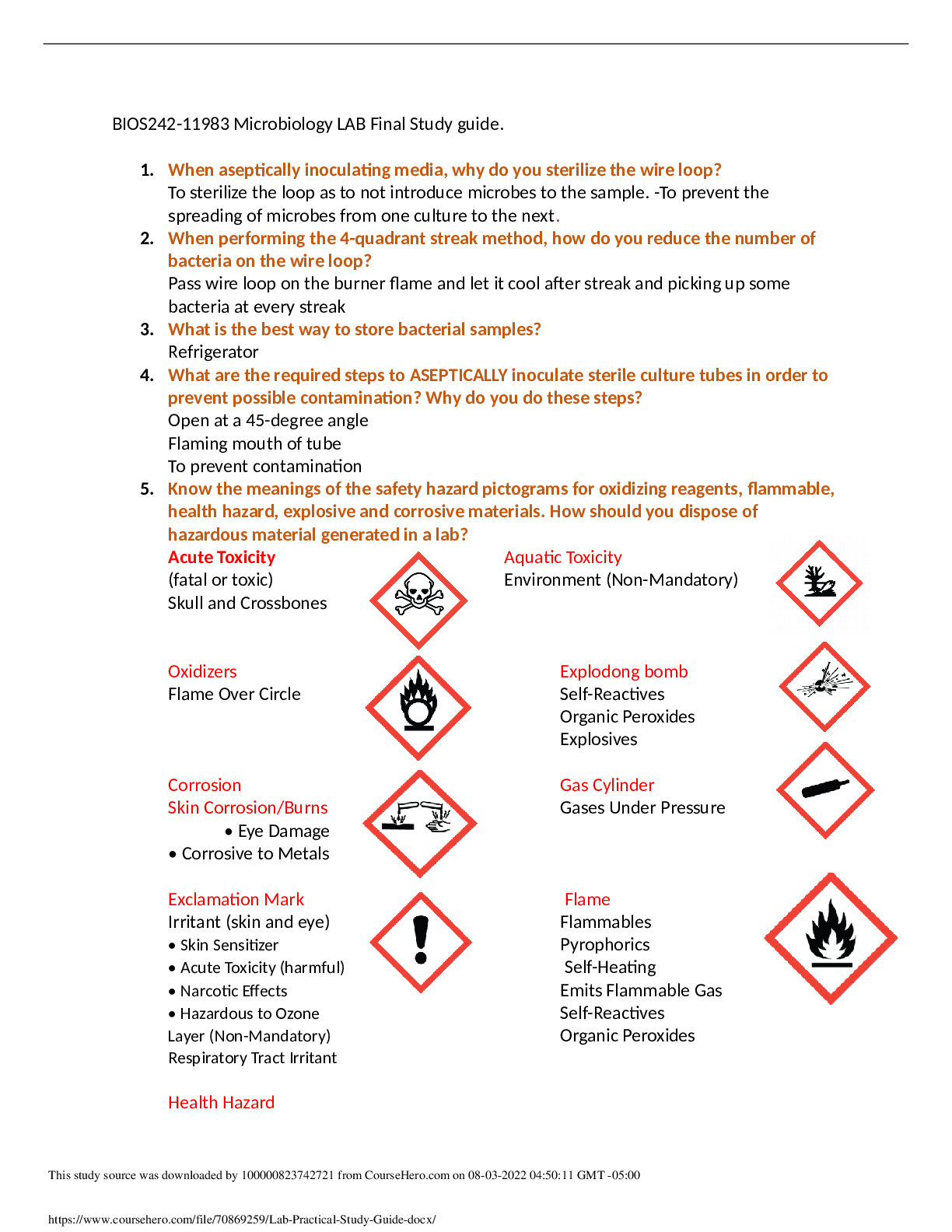

.png)
